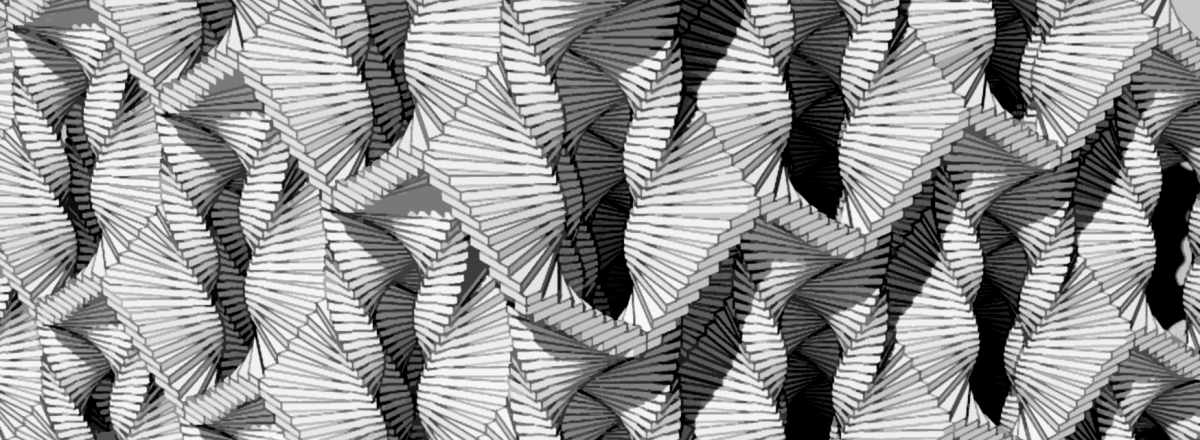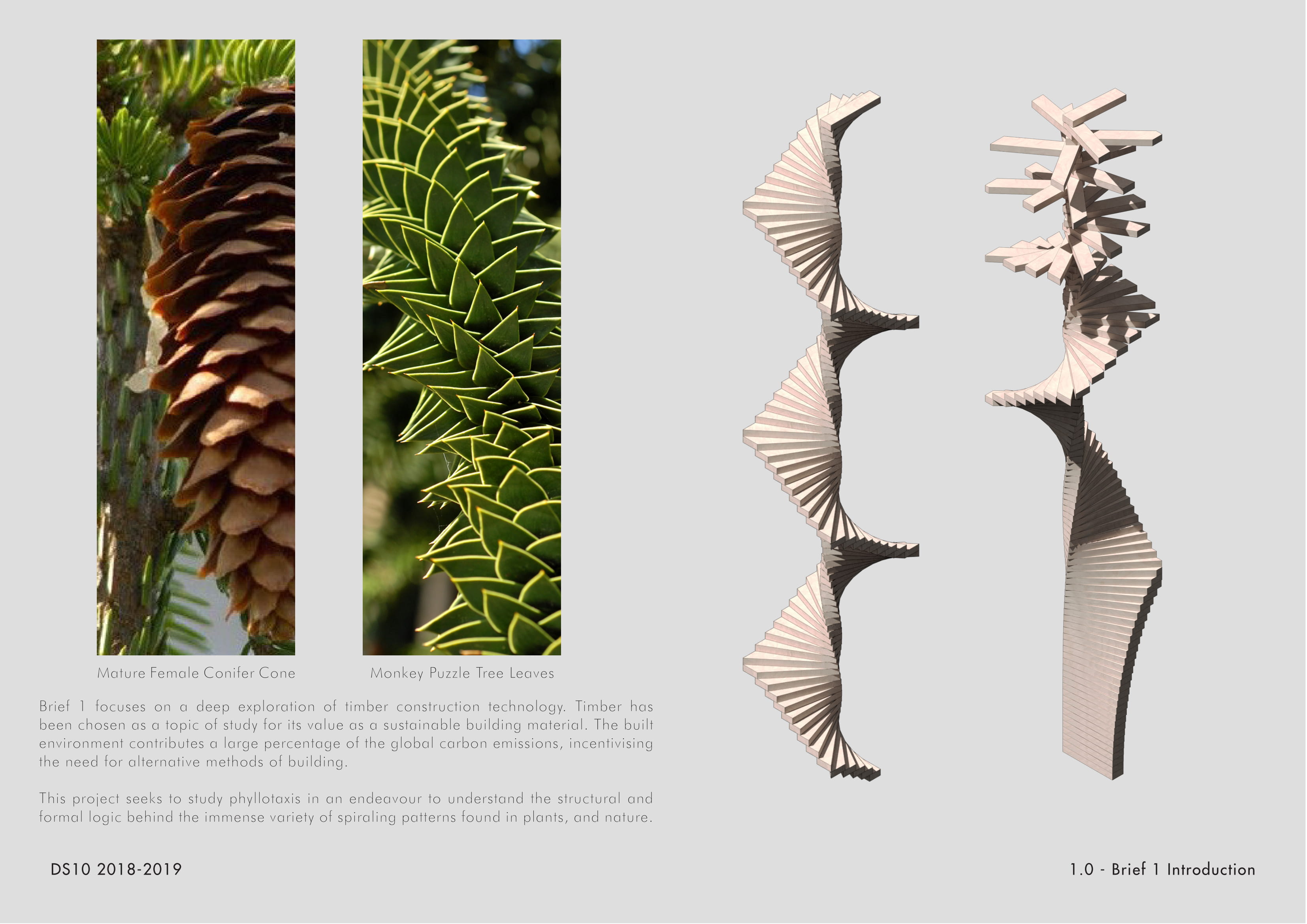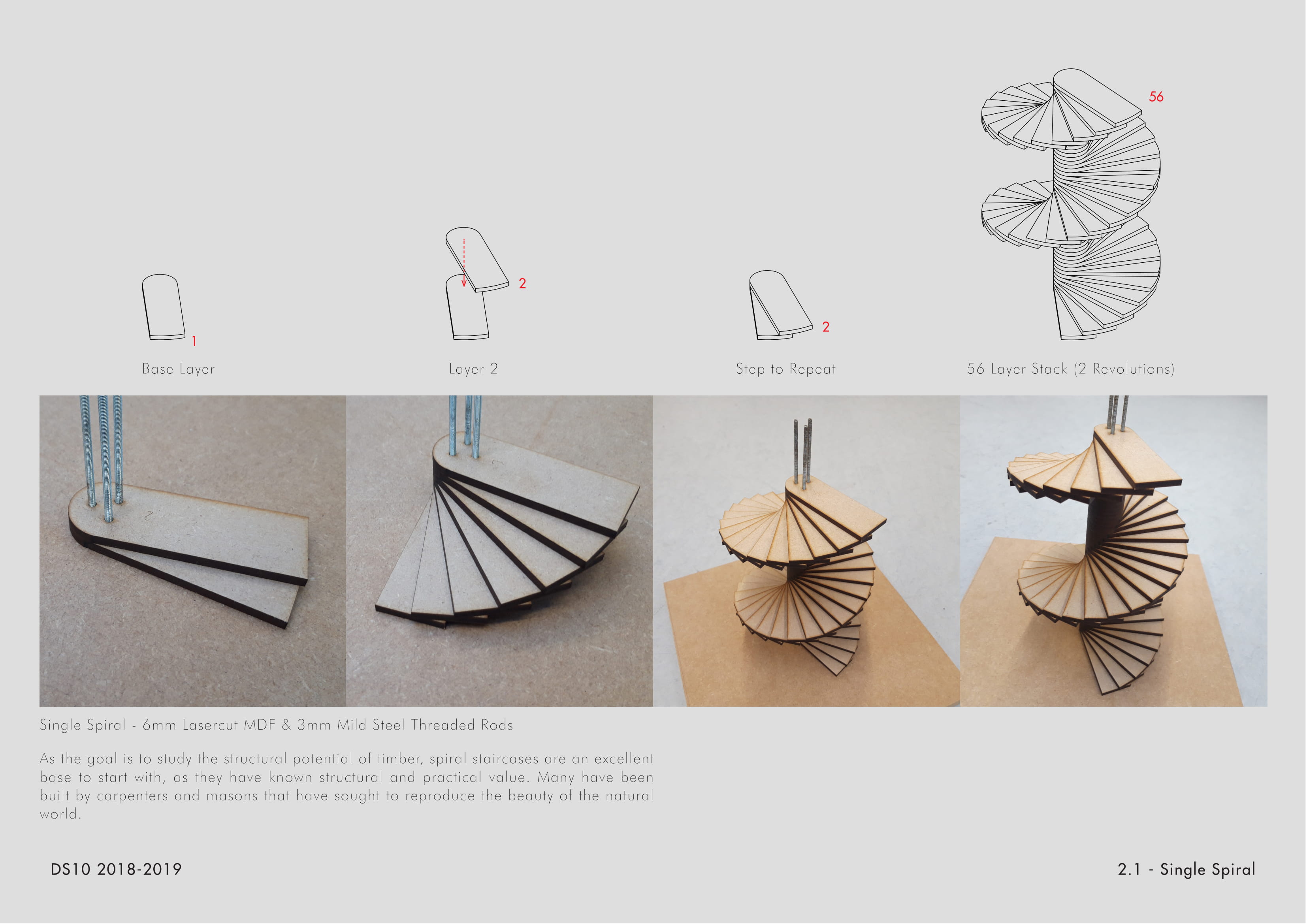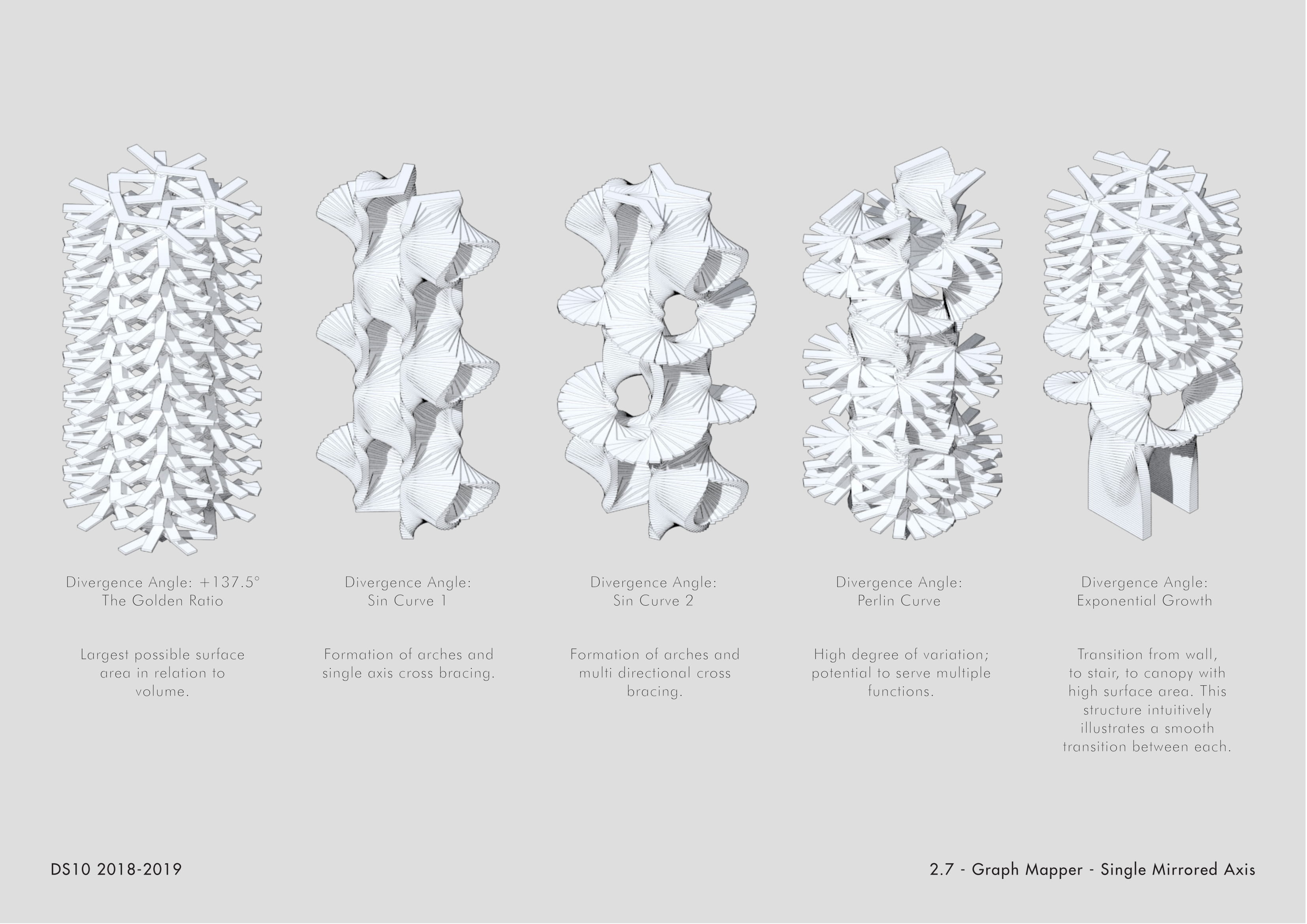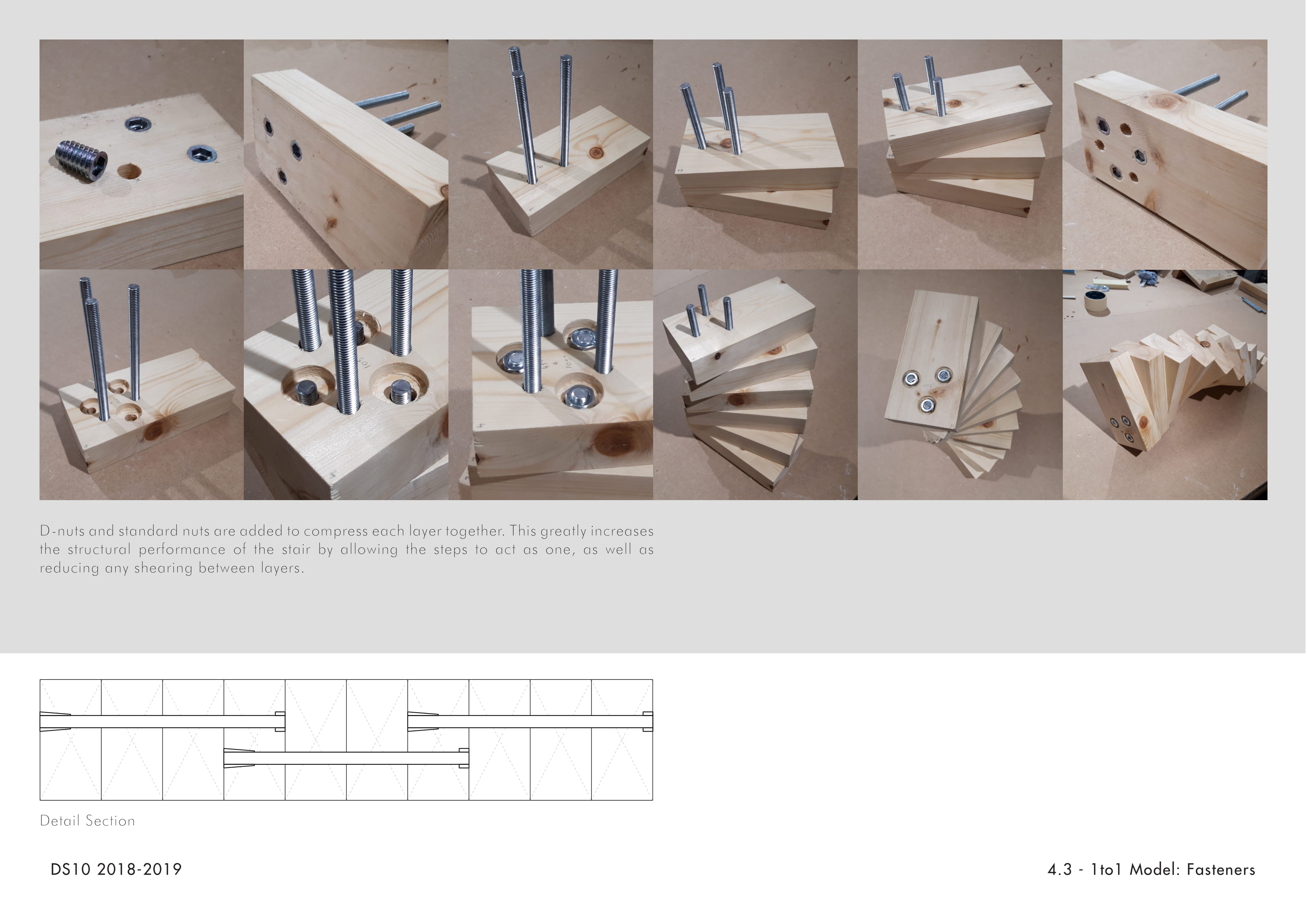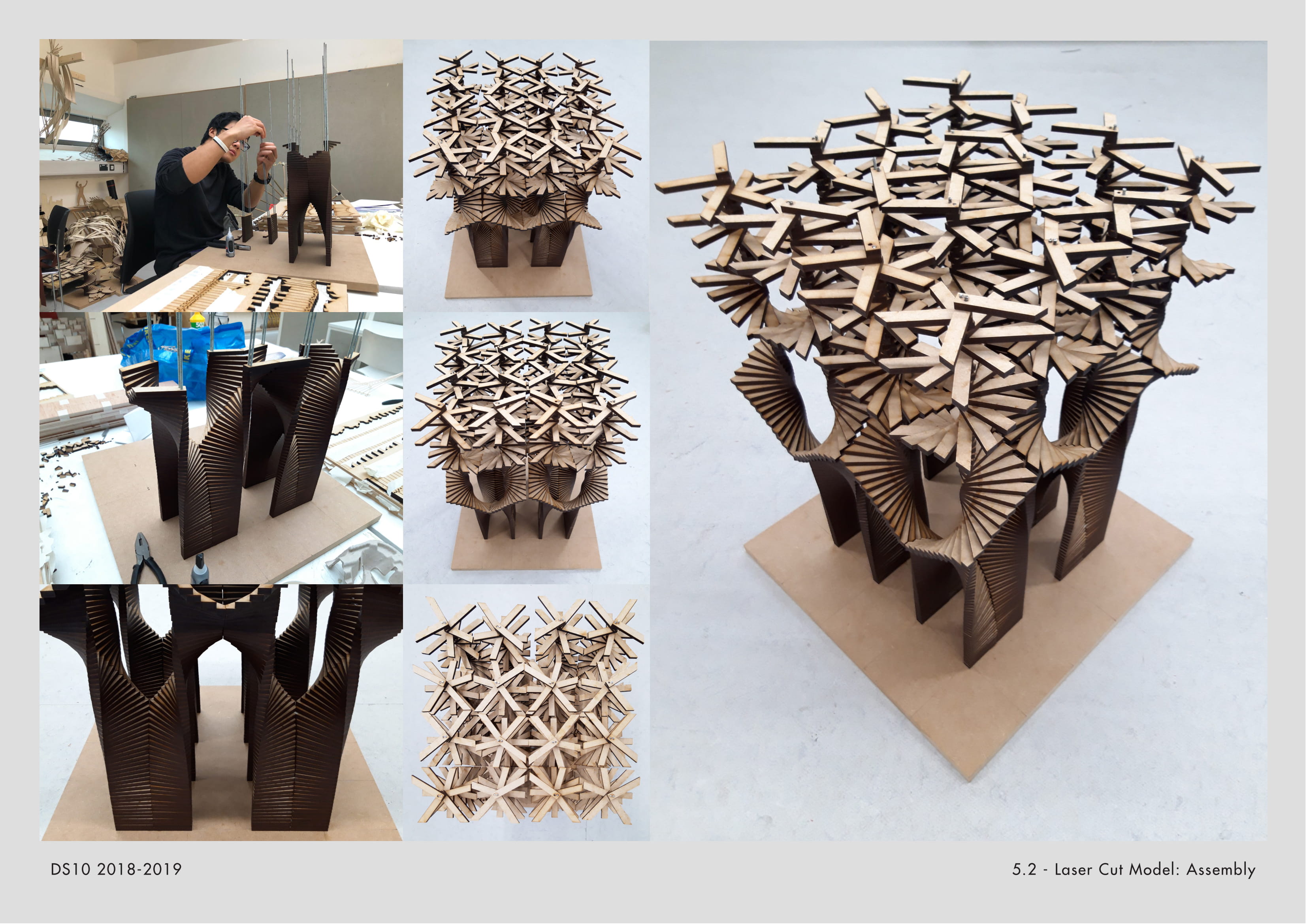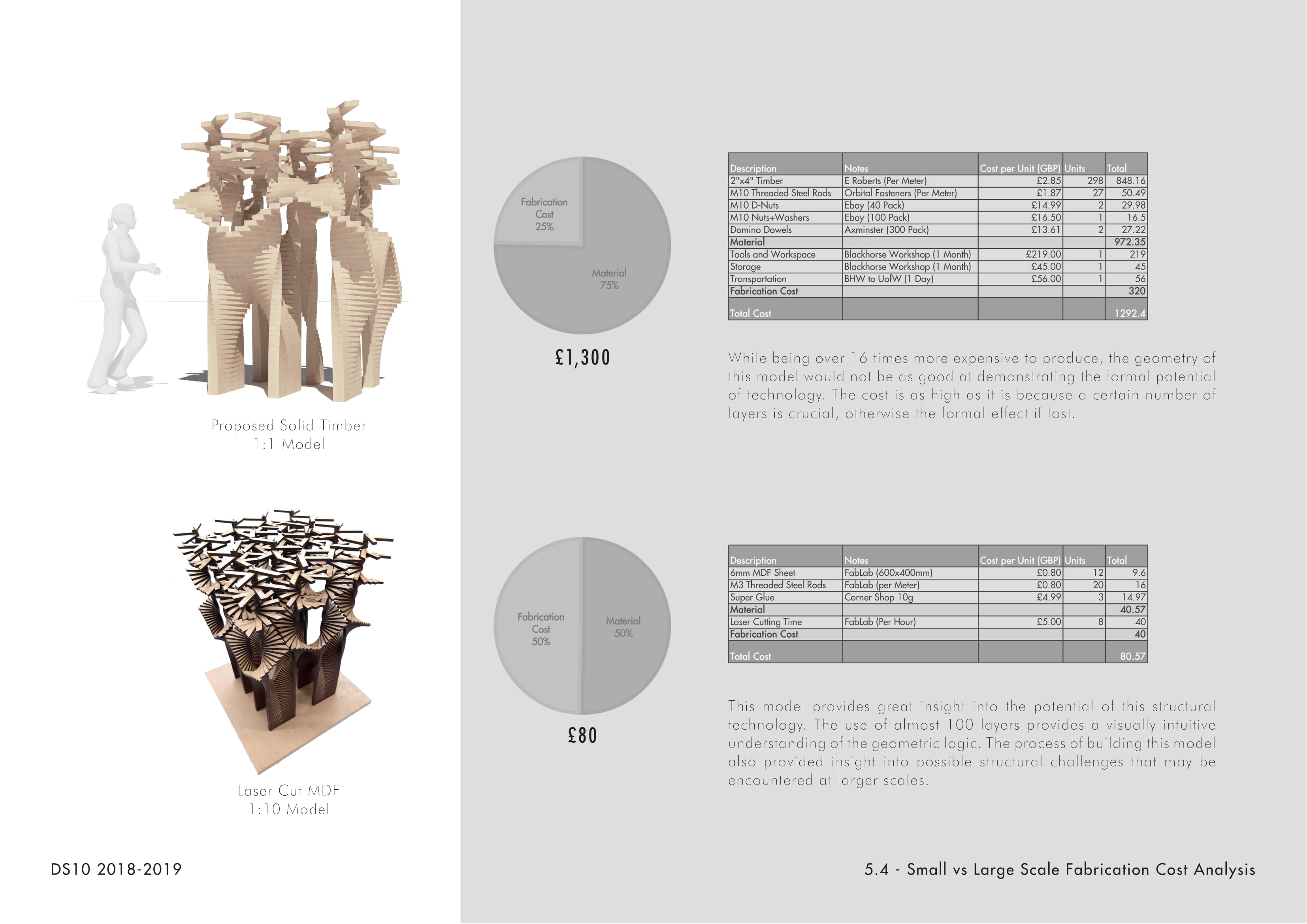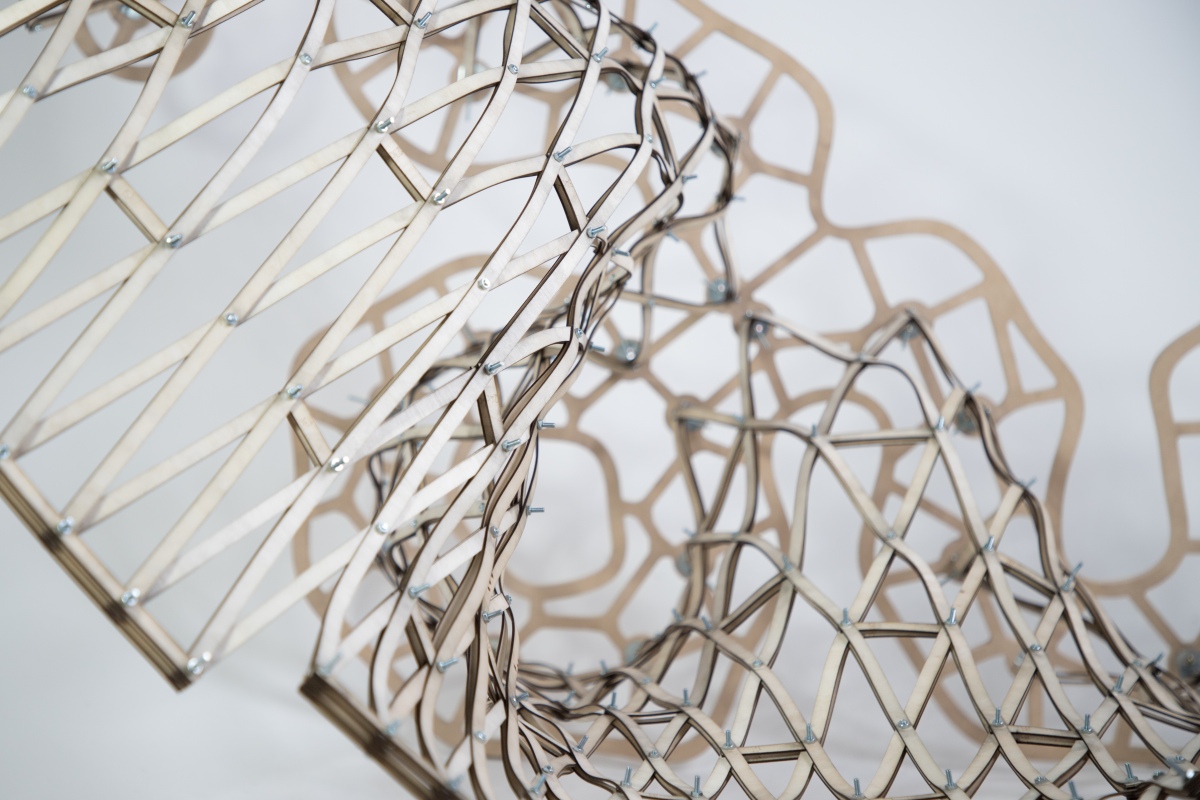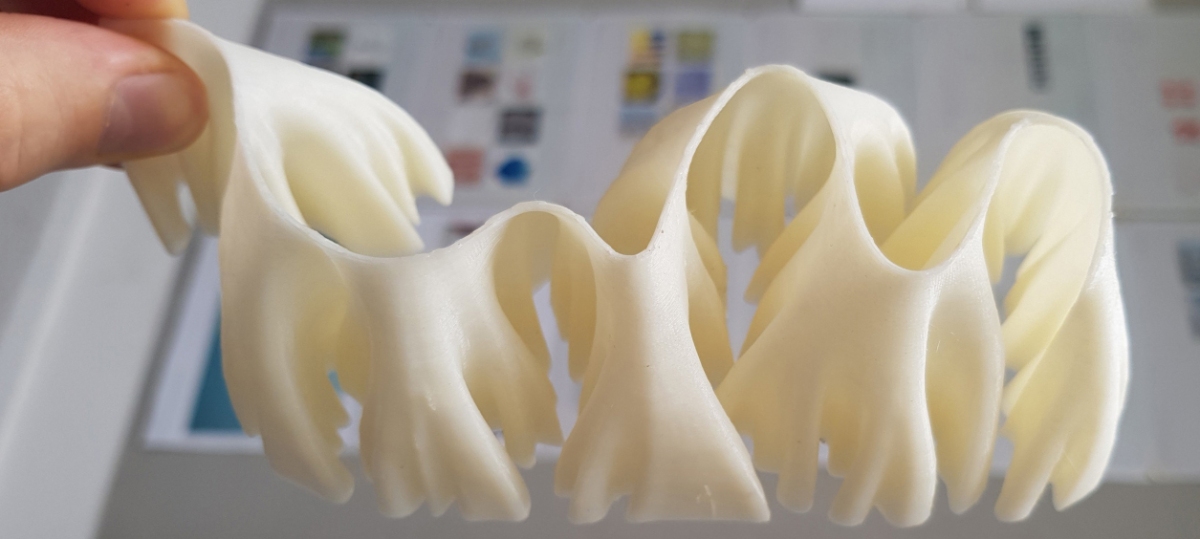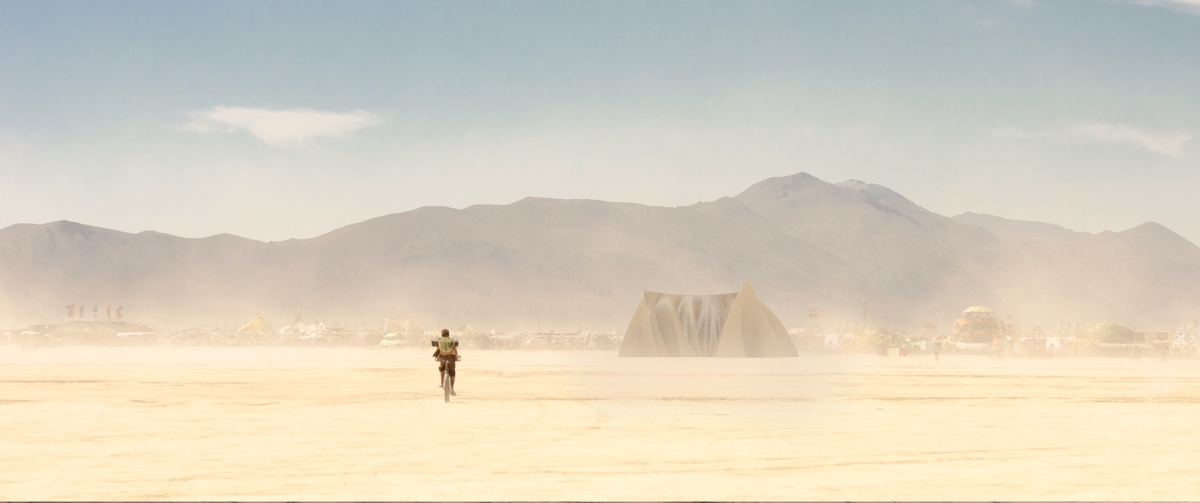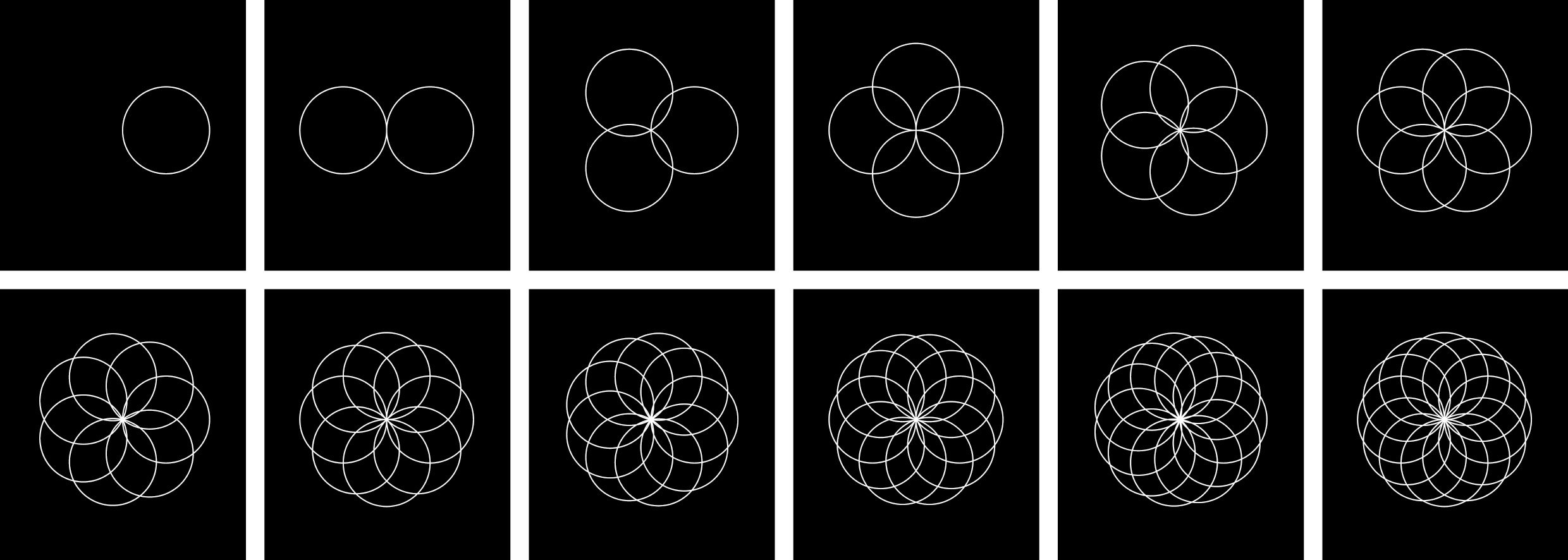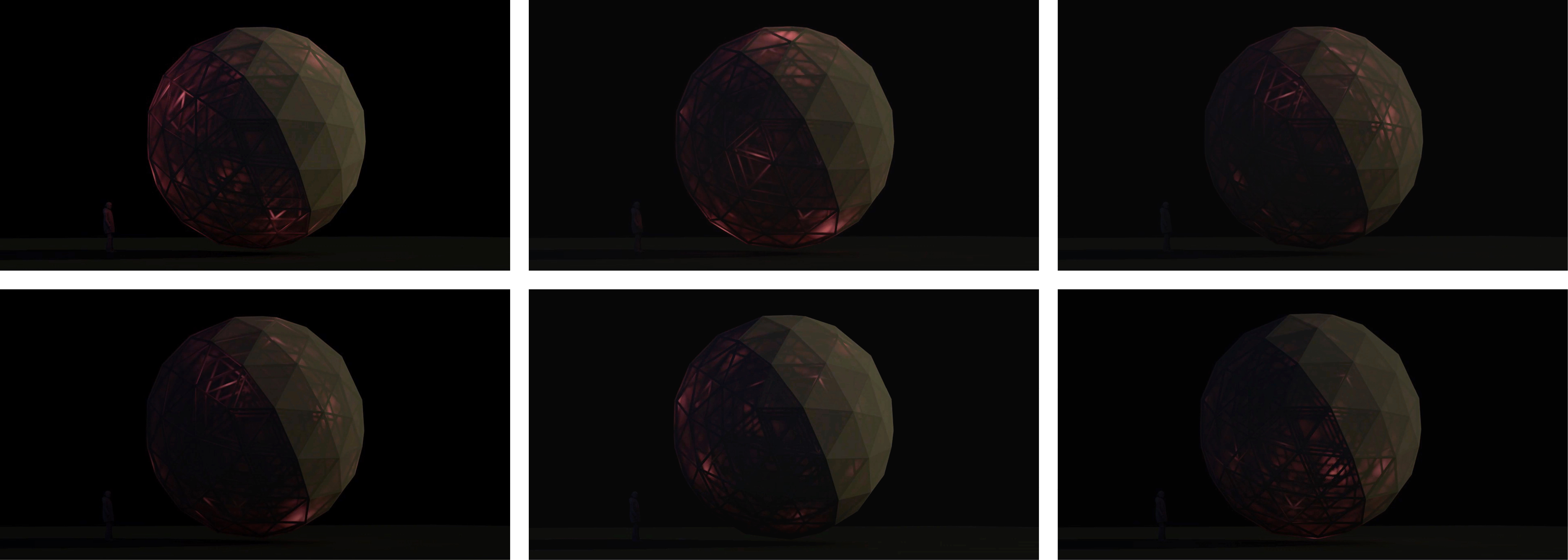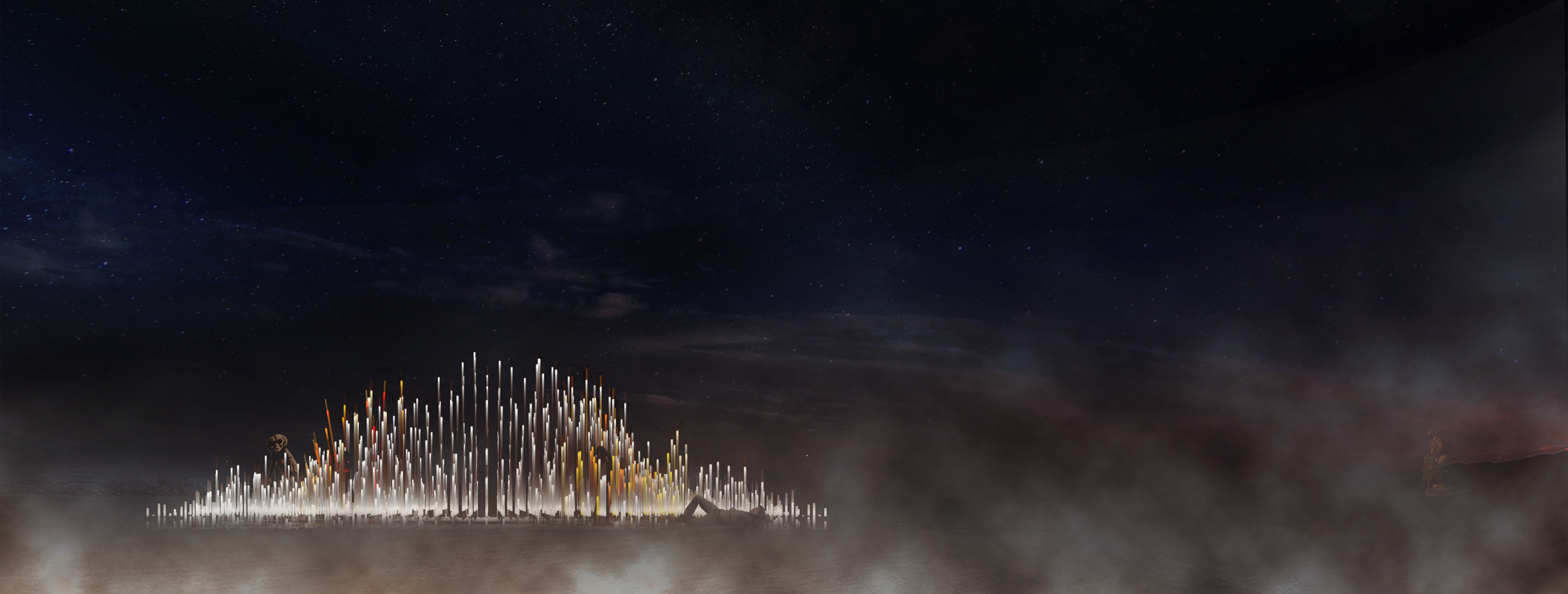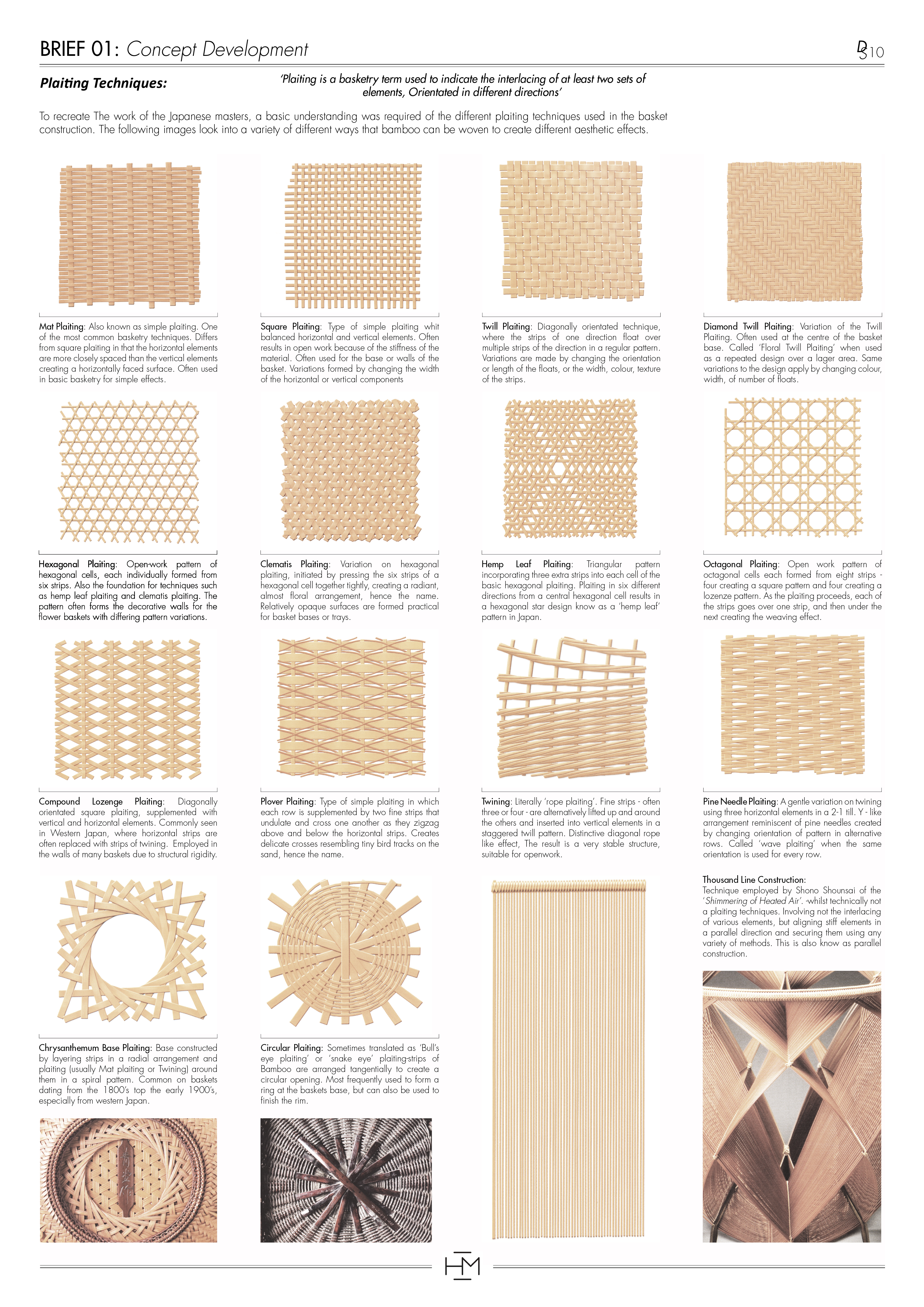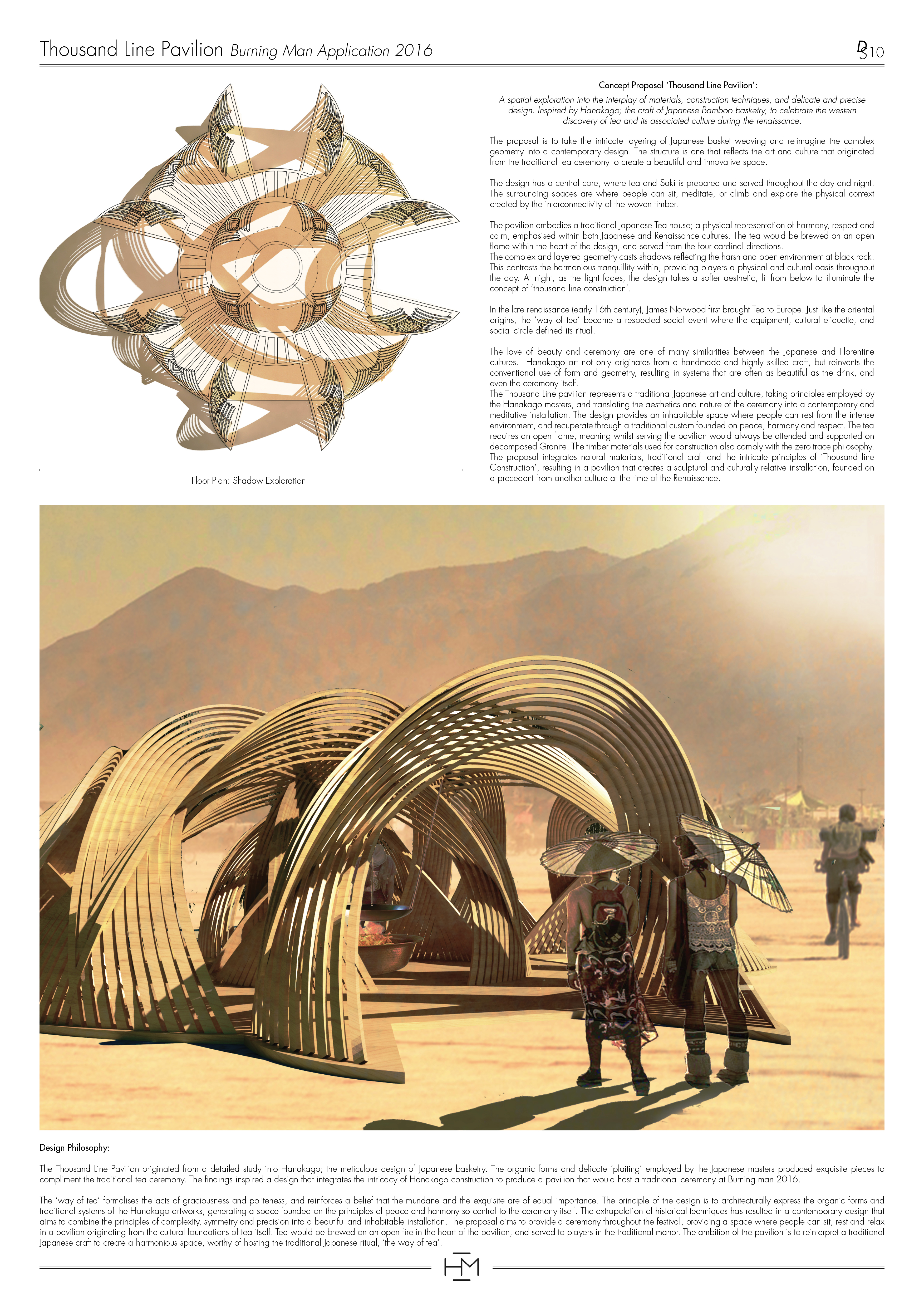Category: models
The Nature of Gridshell Form Finding
Grids, shells, and how they, in conjunction with the study of the natural world, can help us develop increasingly complex structural geometry.
Foreword
This post is the third installment of sort of trilogy, after Shapes, Fractals, Time & the Dimensions they Belong to, and Developing Space-Filling Fractals. While it’s not important to have read either of those posts to follow this one, I do think it adds a certain level of depth and continuity.
Regarding my previous entries, it can be difficult to see how any of this has to do with architecture. In fact I know a few people who think studying fractals is pointless.
Admittedly I often struggle to explain to people what fractals are, let alone how they can influence the way buildings look. However, I believe that this post really sheds light on how these kinds of studies may directly influence and enhance our understanding (and perhaps even the future) of our built environment.
On a separate note, I heard that a member of the architectural academia said “forget biomimicry, it doesn’t work.”
Firstly, I’m pretty sure Frei Otto would be rolling over in his grave.
Secondly, if someone thinks that biomimicry is useless, it’s because they don’t really understand what biomimicry is. And I think the same can be said regarding the study of fractals. They are closely related fields of study, and I wholeheartedly believe they are fertile grounds for architectural marvels to come.
7.0 Introduction to Shells
As far as classification goes, shells generally fall under the category of two-dimensional shapes. They are defined by a curved surface, where the material is thin in the direction perpendicular to the surface. However, assigning a dimension to certain shells can be tricky, since it kinda depends on how zoomed in you are.
A strainer is a good example of this – a two-dimensional gridshell. But if you zoom in, it is comprised of a series of woven, one-dimensional wires. And if you zoom in even further, you see that each wire is of course comprised of a certain volume of metal.
This is a property shared with many fractals, where their dimension can appear different depending on the level of magnification. And while there’s an infinite variety of possible shells, they are (for the most part) categorizable.
7.1 – Single Curved Surfaces
Analytic geometry is created in relation to Cartesian planes, using mathematical equations and a coordinate systems. Synthetic geometry is essentially free-form geometry (that isn’t defined by coordinates or equations), with the use of a variety of curves called splines. The following shapes were created via Synthetic geometry, where we’re calling our splines ‘u’ and ‘v.’
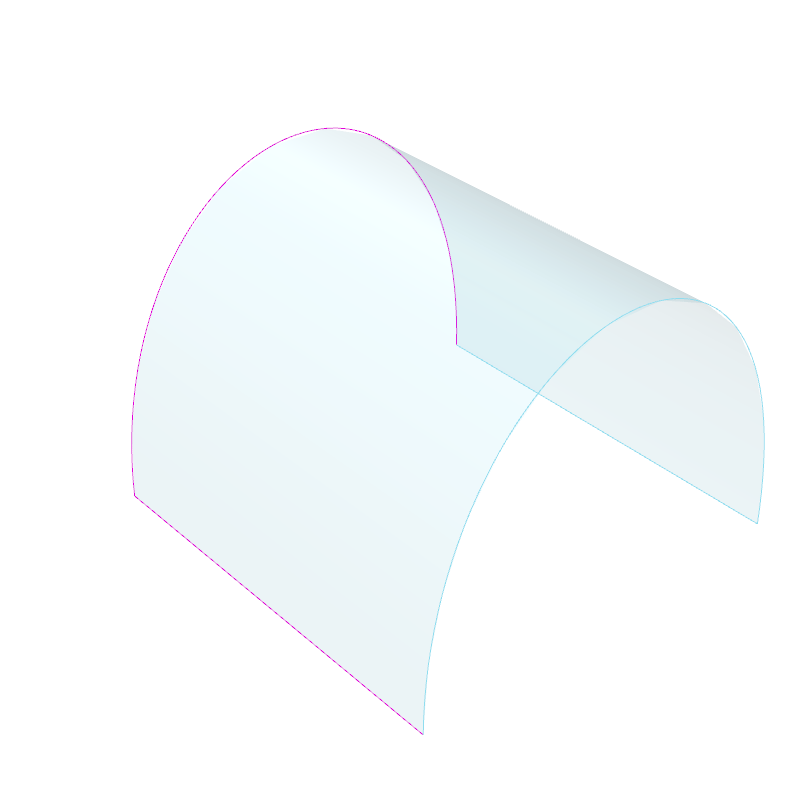
These curves highlight each dimension of the two-dimensional surface. In this case only one of the two ‘curves’ is actually curved, making this shape developable. This means that if, for example, it was made of paper, you could flatten it completely.
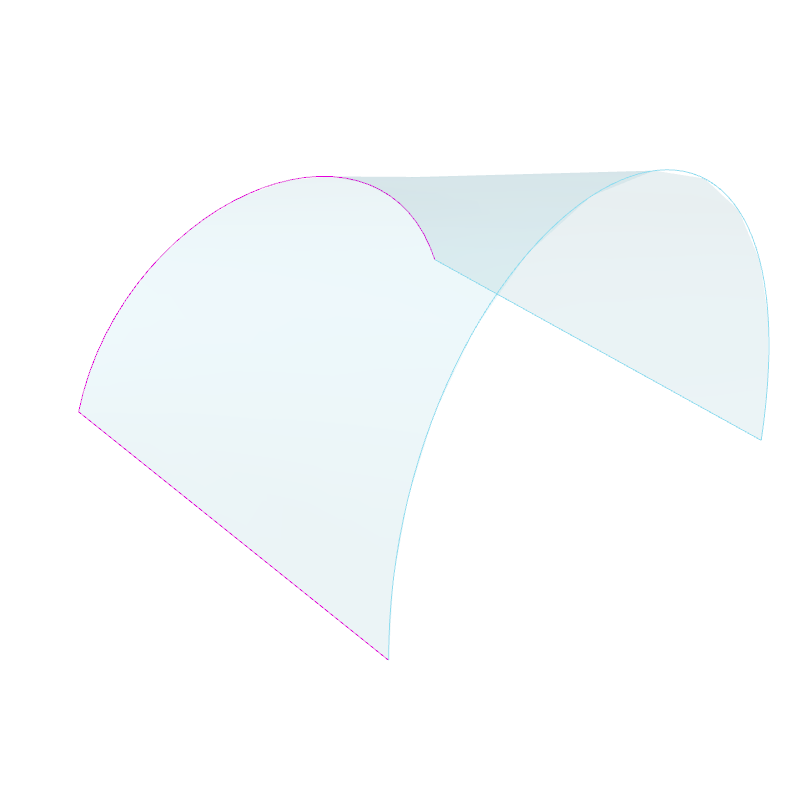
Uniclastic: Conoid (Conical paraboloid)
In this case, one of them grows in length, but the other still remains straight. Since one of the dimensions remains straight, it’s still a single curved surface – capable of being flattened without changing the area. Singly curved surfaced may also be referred to as uniclastic or monoclastic.
7.2 – Double Curved Surfaces
These can be classified as synclastic or anticlastic, and are non-developable surfaces. If made of paper, you could not flatten them without tearing, folding or crumpling them.
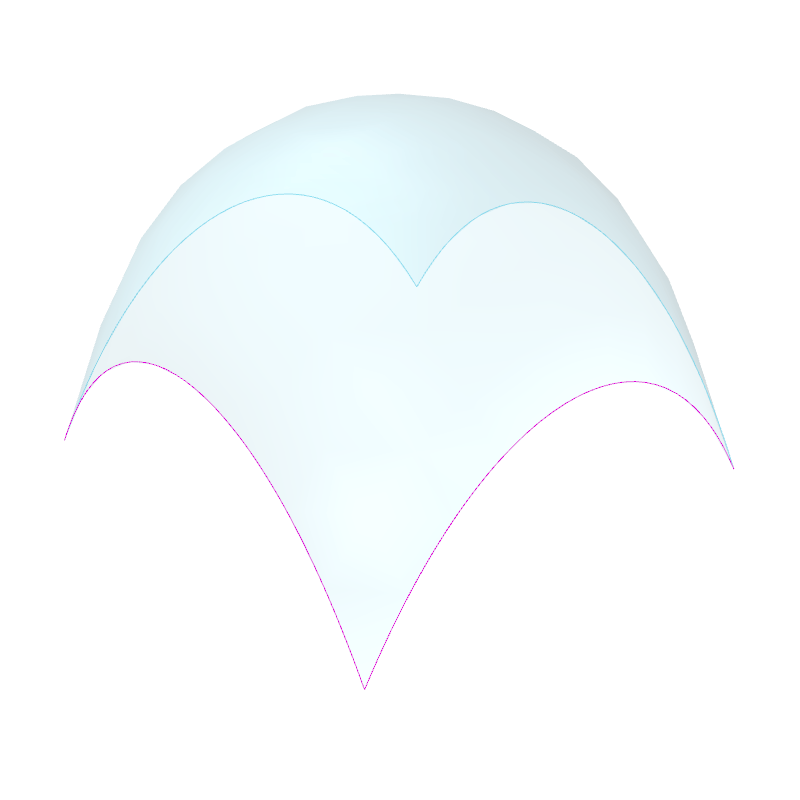
In this case, both curves happen to be identical, but what’s important is that both dimensions are curving in the same direction. In this orientation, the dome is also under compression everywhere.
The surface of the earth is double curved, synclastic – non-developable. “The surface of a sphere cannot be represented on a plane without distortion,” a topic explored by Michael Stevens: https://www.youtube.com/watch?v=2lR7s1Y6Zig
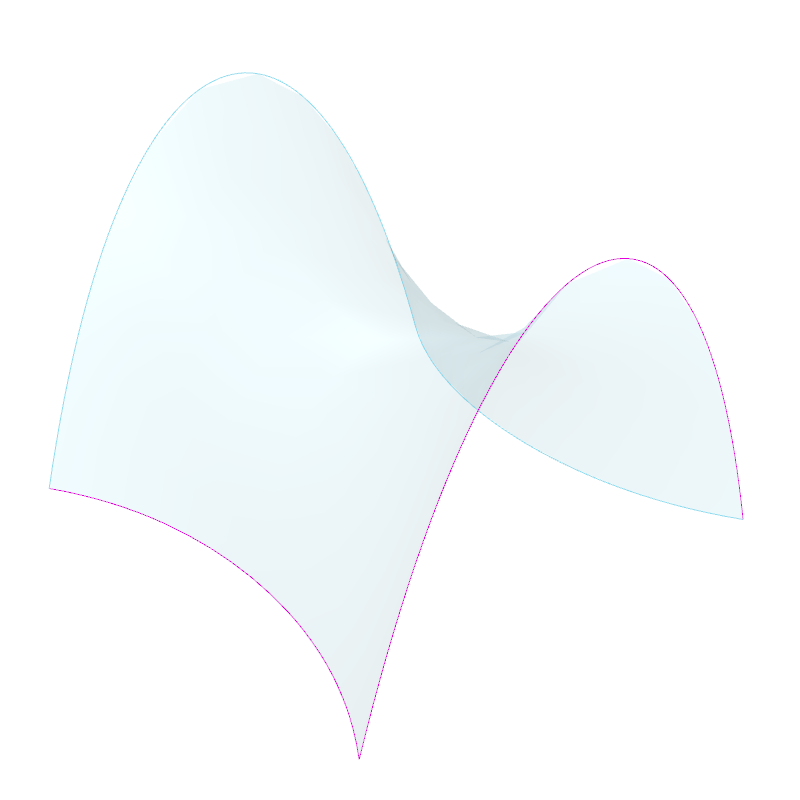
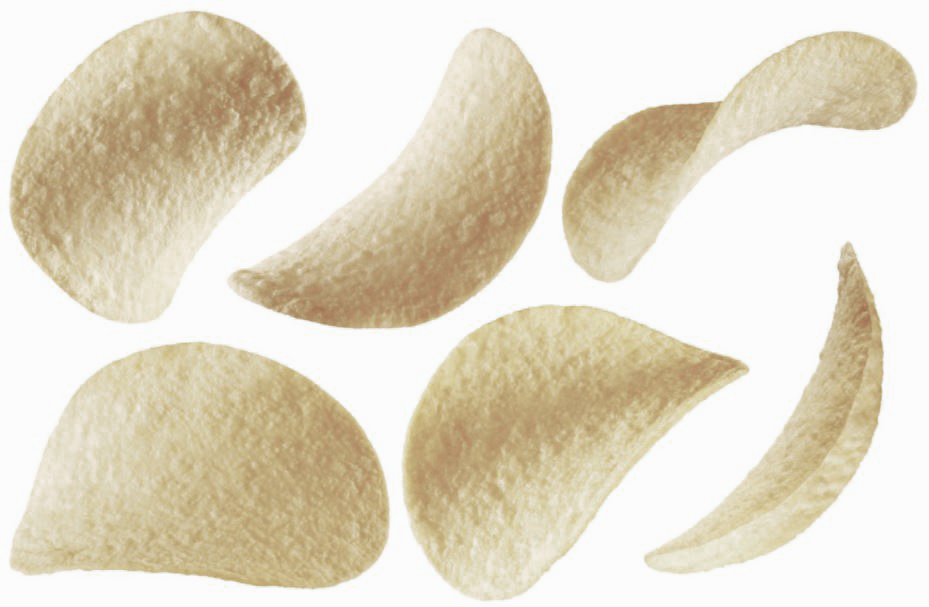
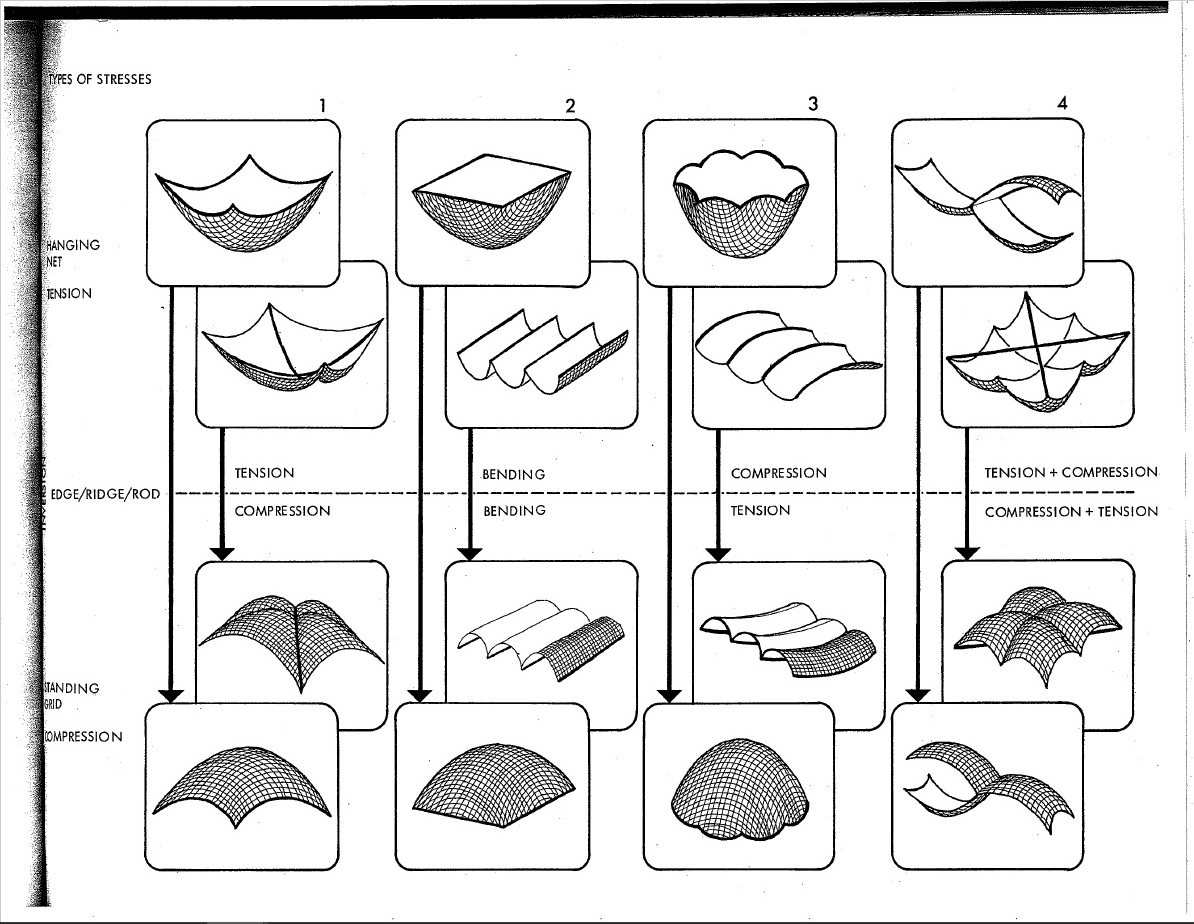
7.3 – Translation vs Revolution
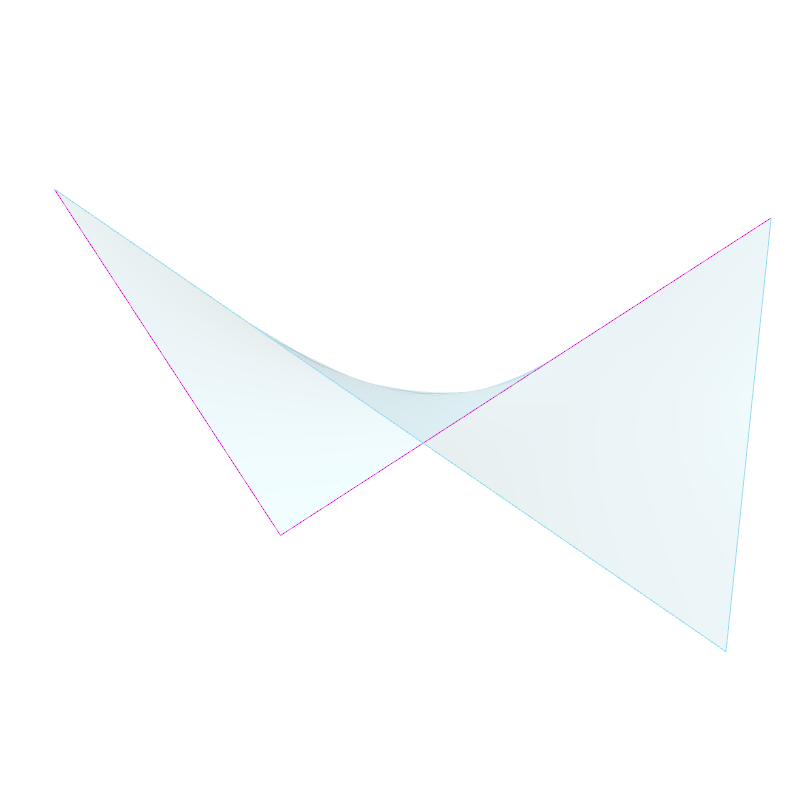
This shape was achieved by sweeping a straight line over a straight path at one end, and another straight path at the other. This will work as long as both rails are not parallel. Although I find this shape perplexing; it’s double curvature that you can create with straight lines, yet non-developable, and I can’t explain it..
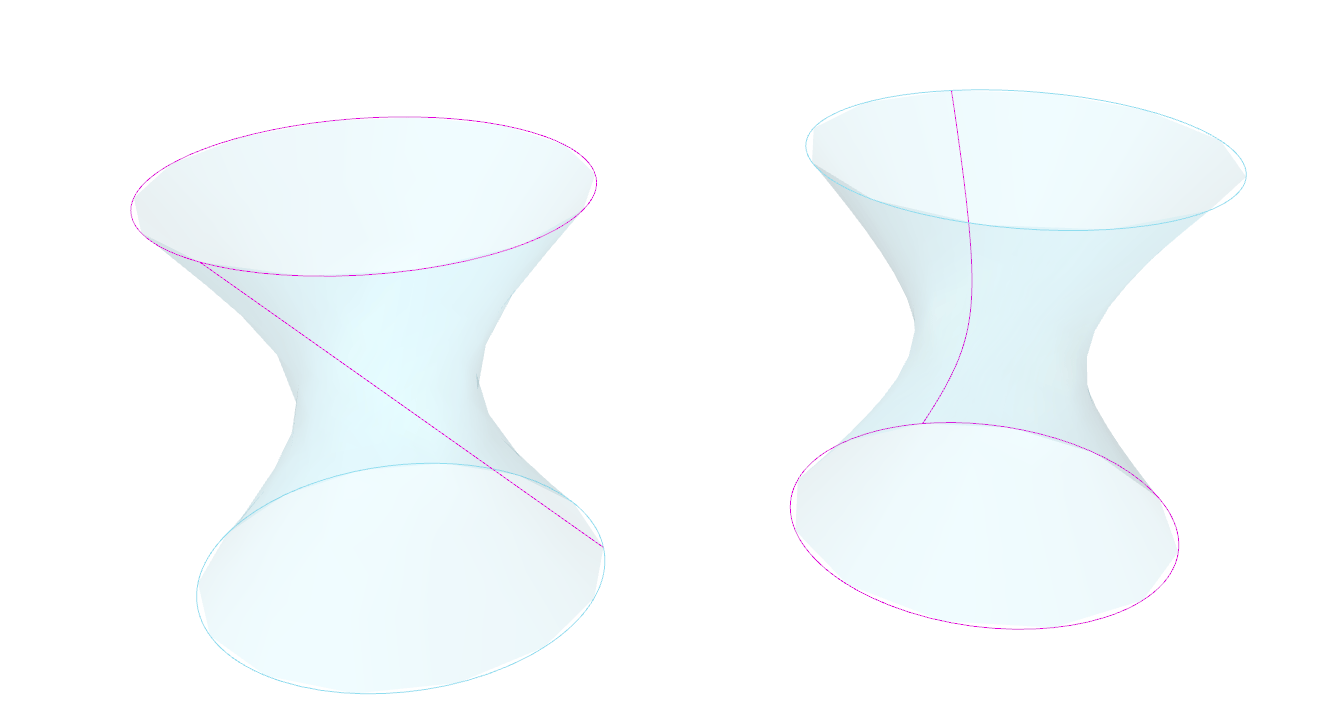
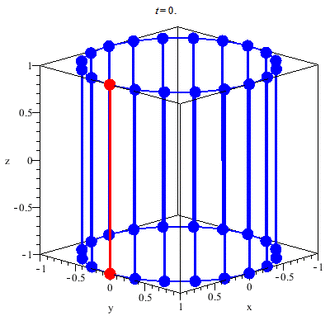
The hyperboloid has been a popular design choice for (especially nuclear cooling) towers. It has excellent tensile and compressive properties, and can be built with straight members. This makes it relatively cheap and easy to fabricate relative to it’s size and performance.
8.0 Geodesic Curves
These are singly curved curves, although that does sound confusing. A simple way to understand what geodesic curves are, is to give them a width. As previously explored, we know that curves can inhabit, and fill, two-dimensional space. However, you can’t really observe the twists and turns of a shape that has no thickness.
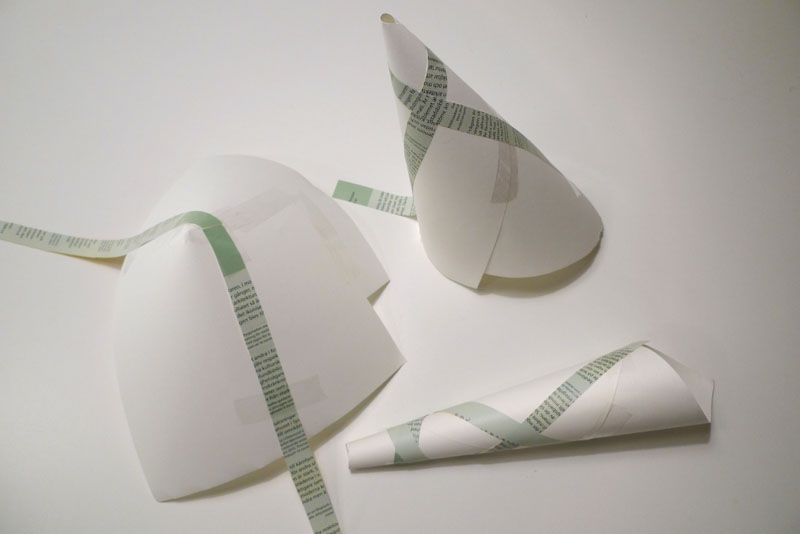
A ribbon is essentially a straight line with thickness, and when used to follow the curvature of a surface (as seen above), the result is a plank line. The term ‘plank line’ can be defined as a line with an given width (like a plank of wood) that passes over a surface and does not curve in the tangential plane, and whose width is always tangential to the surface.
Since one-dimensional curves do have an orientation in digital modeling, geodesic curves can be described as the one-dimensional counterpart to plank lines, and can benefit from the same definition.
The University of Southern California published a paper exploring the topic further: http://papers.cumincad.org/data/works/att/f197.content.pdf
8.1 – Basic Grid Setup
For simplicity, here’s a basic grid set up on a flat plane:
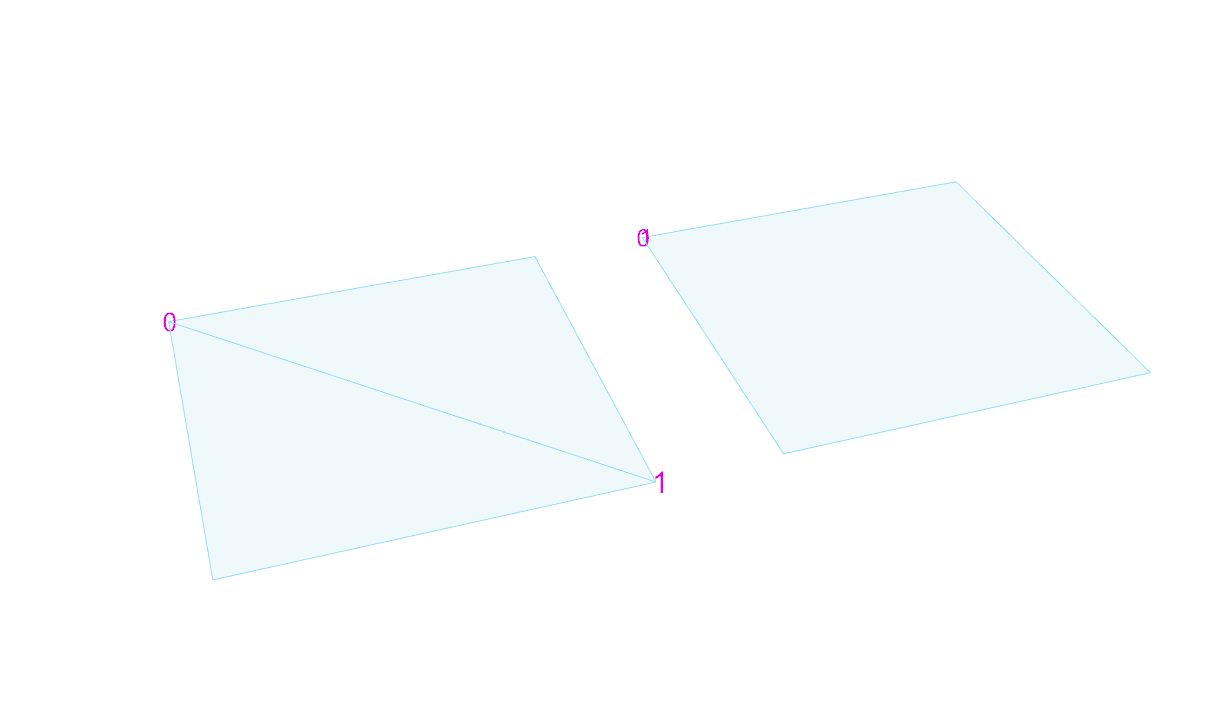
We start by defining two points anywhere along the edge of the surface. Then we find the geodesic curve that joins the pair. Of course it’s trivial in this case, since we’re dealing with a flat surface, but bear with me.
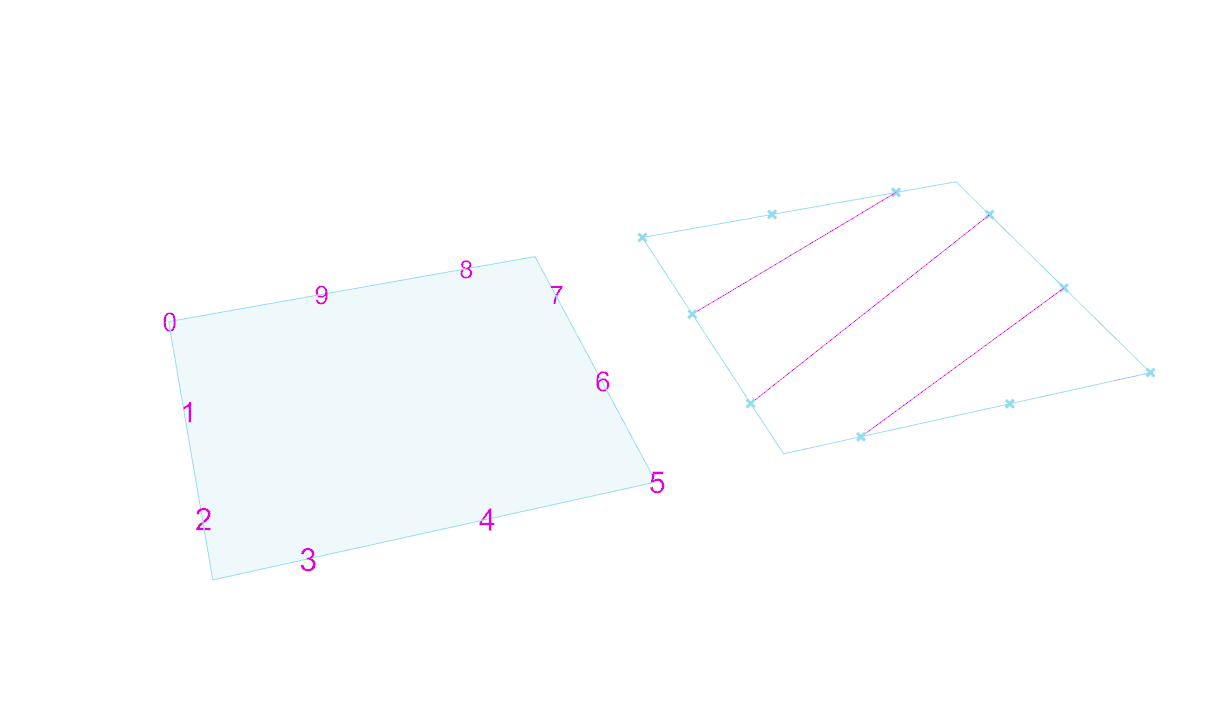
We can keep adding pairs of points along the edge. In this case they’re kept evenly spaced and uncrossing for the sake of a cleaner grid.
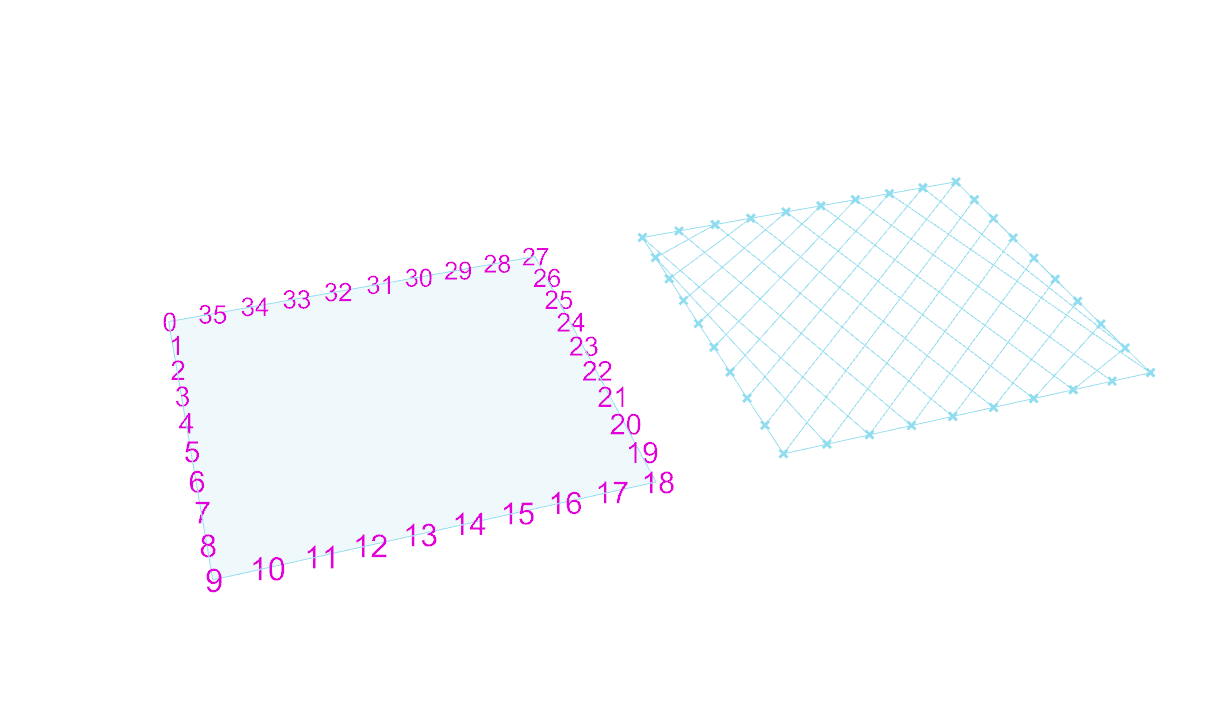
After that, it’s simply a matter of playing with density, as well as adding an additional set of antagonistic curves. For practicality, each set share the same set of base points.
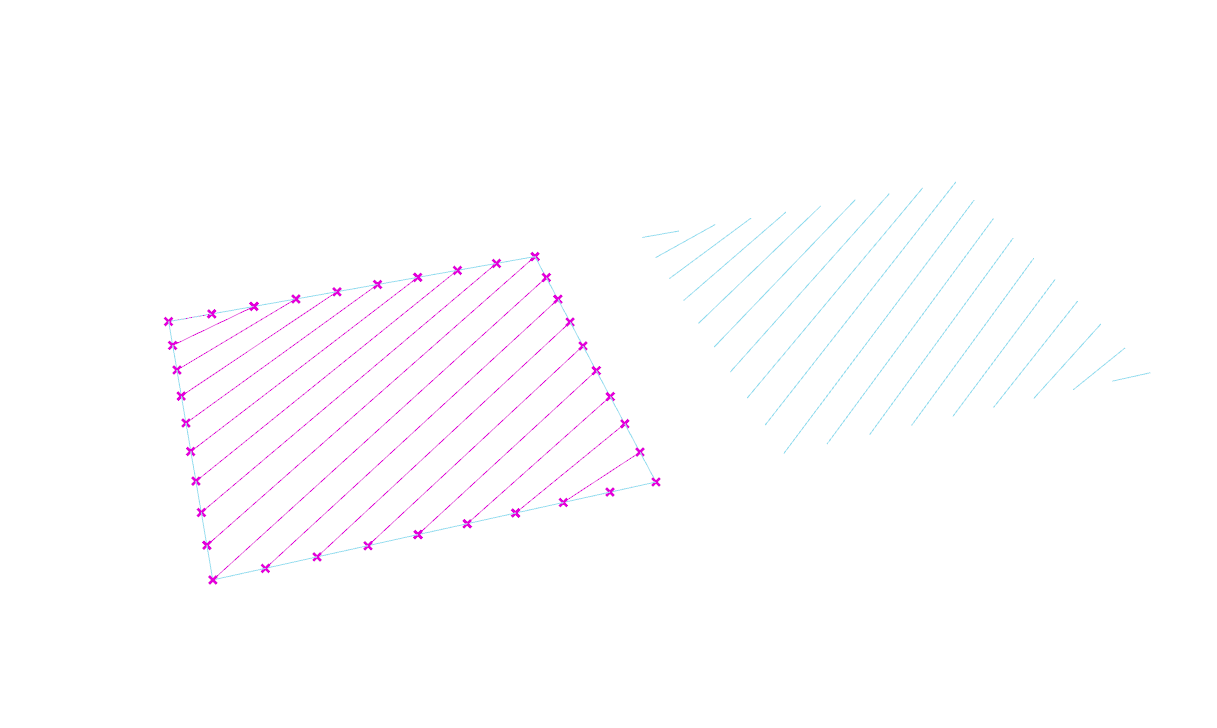
He’s an example of a grid where each set has their own set of anchors. While this does show the flexibility of a grid, I think it’s far more advantageous for them to share the same base points.
8.2 – Basic Gridshells
The same principle is then applied to a series of surfaces with varied types of curvature.
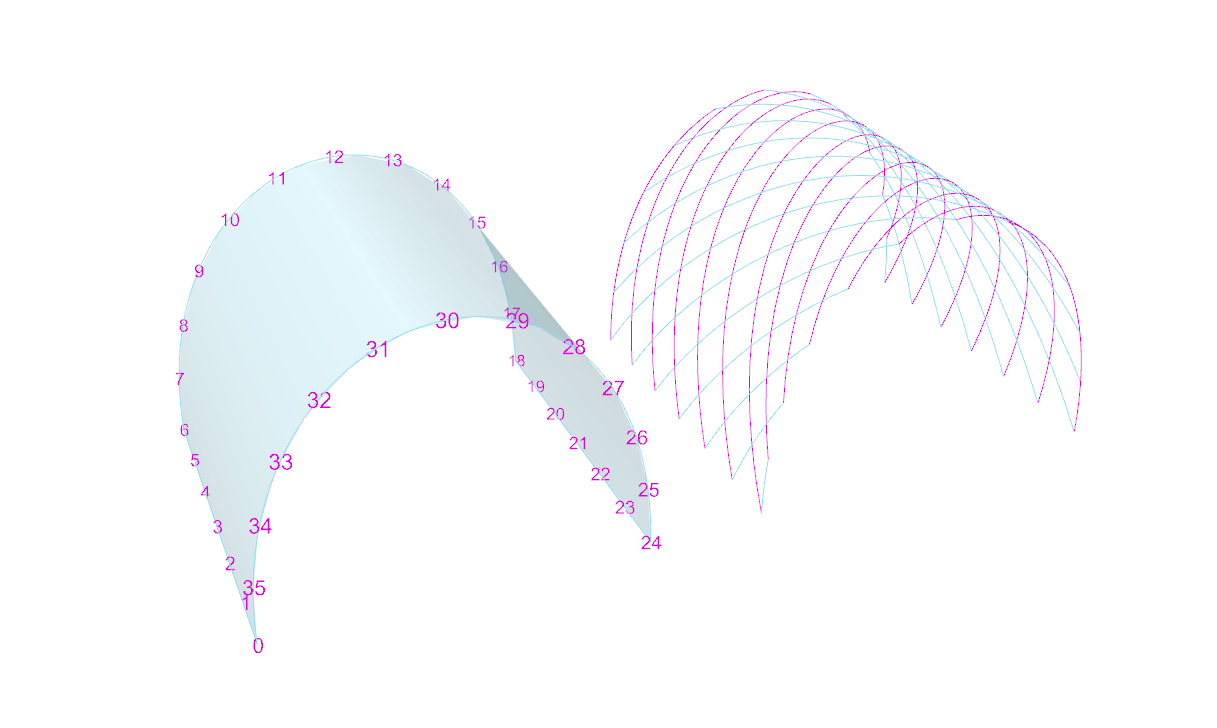
First comes the shell (a barrel vault in this case), then comes the grid. The symmetrical nature of this surface translates to a pretty regular (and also symmetrical) gridshell. The use of geodesic curves means that these gridshells can be fabricated using completely straight material, that only necessitate single curvature.
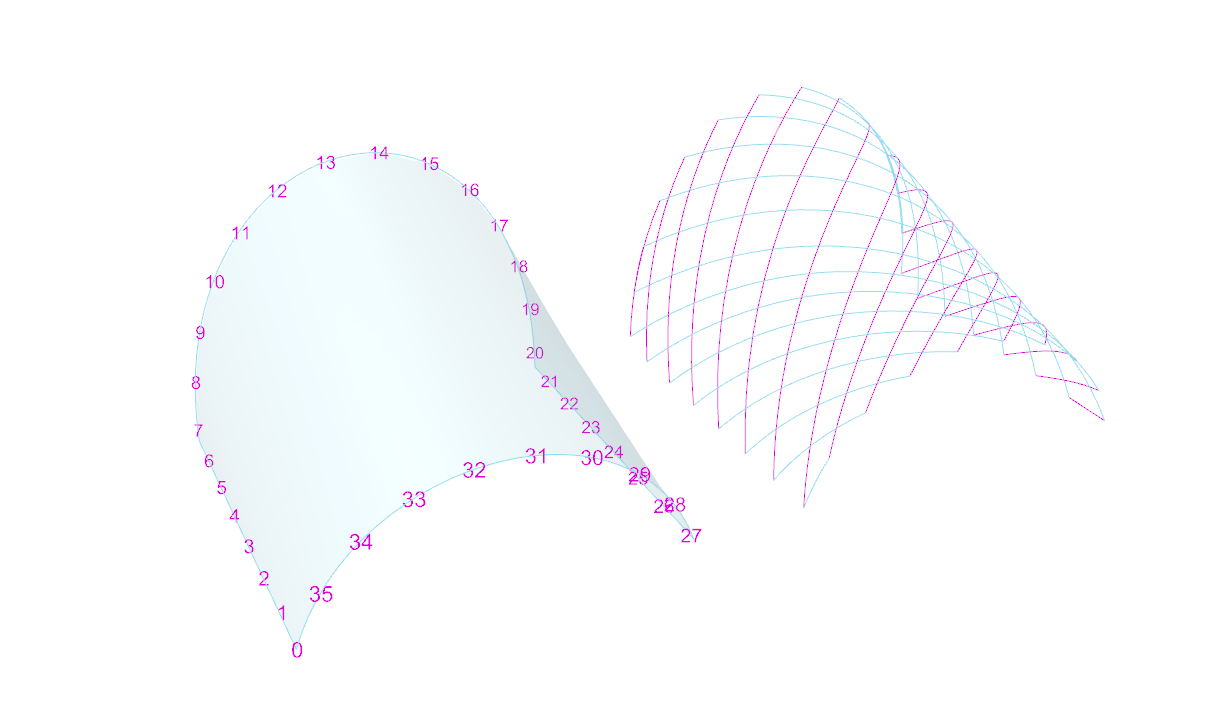
The same grid used on a conical surface starts to reveal gradual shifts in the geometry’s spacing. The curves always search for the path of least resistance in terms of bending.
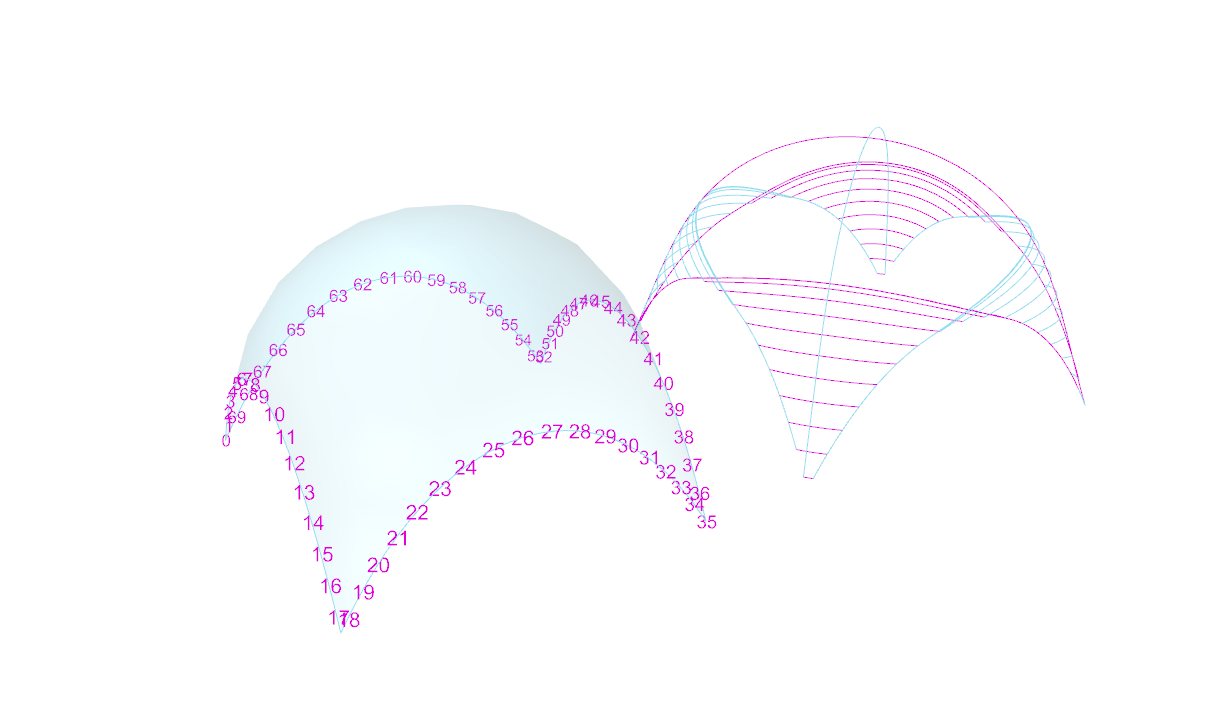
This case illustrates the nature of geodesic curves quite well. The dome was free-formed with a relatively high degree of curvature. A small change in the location of each anchor point translates to a large change in curvature between them. Each curve looks for the shortest path between each pair (without leaving the surface), but only has access to single curvature.
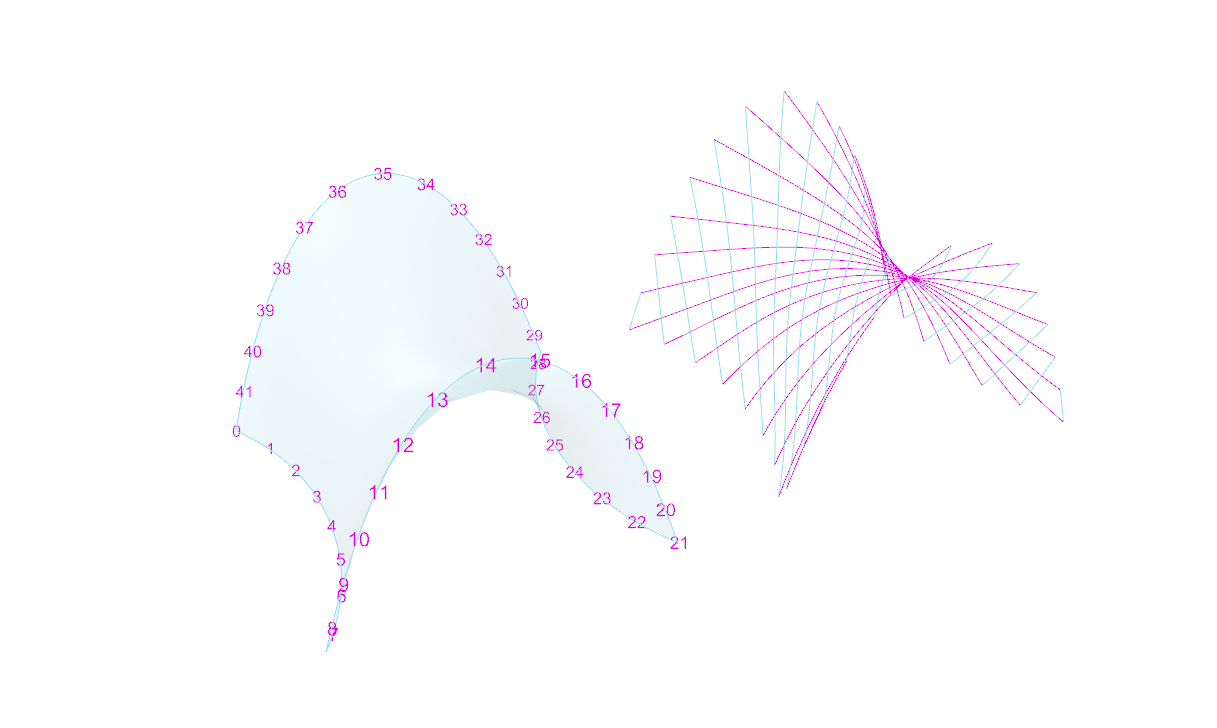
Structurally speaking, things get much more interesting with anticlastic curvature. As previously stated, each member will behave differently based on their relative curvature and orientation in relation to the surface. Depending on their location on a gridshell, plank lines can act partly in compression and partly in tension.
On another note:
While geodesic curves make it far more practical to fabricate shells, they are not a strict requirement. Using non-geodesic curves just means more time, money, and effort must go into the fabrication of each component. Furthermore, there’s no reason why you can’t use alternate grid patterns. In fact, you could use any pattern under the sun – any motif your heart desires (even tessellated puppies.)
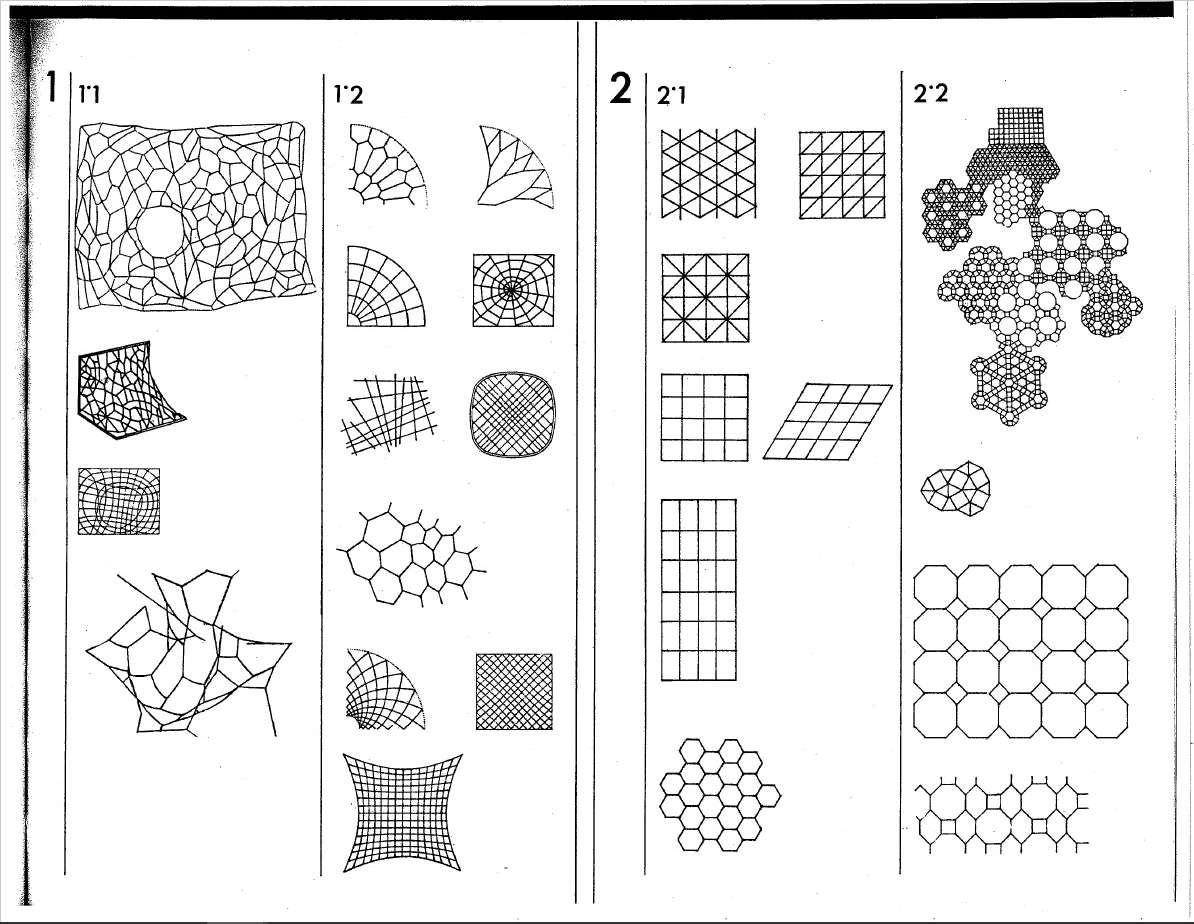
Here are just a few of the endless possible pattern. They all have their advantages and disadvantages in terms of fabrication, as well as structural potential.
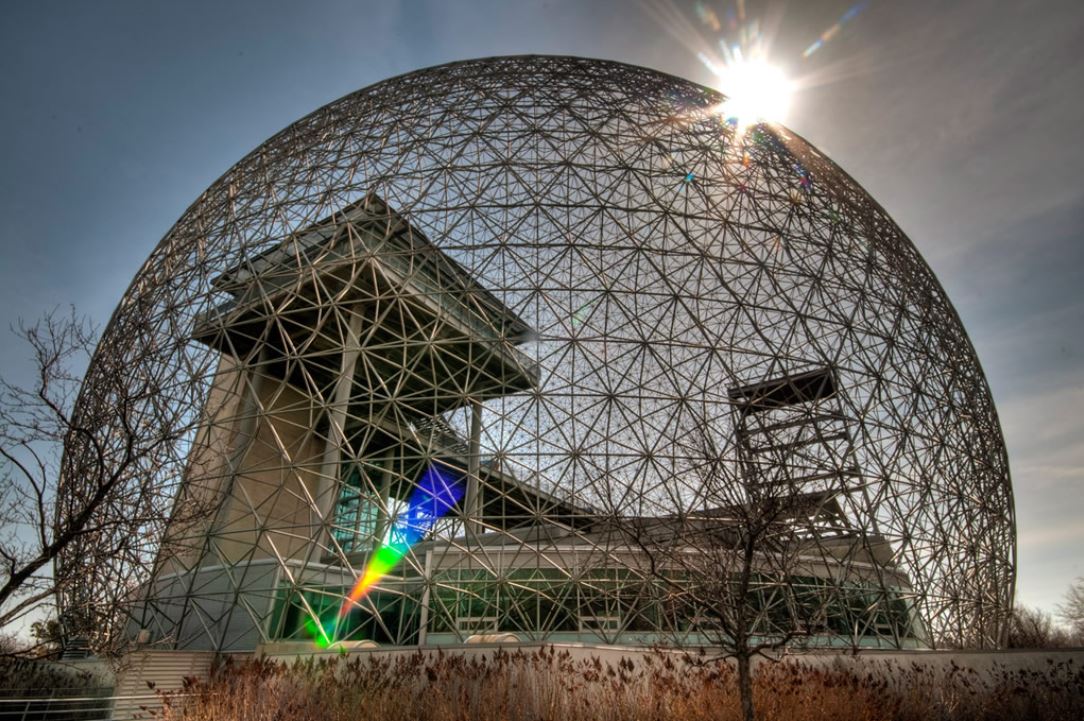
Gridshells with large amounts of triangulation, such as Buckminster Fuller’s geodesic spheres, typically perform incredibly well structurally. These structure are also highly efficient to manufacture, as their geometry is extremely repetitive.
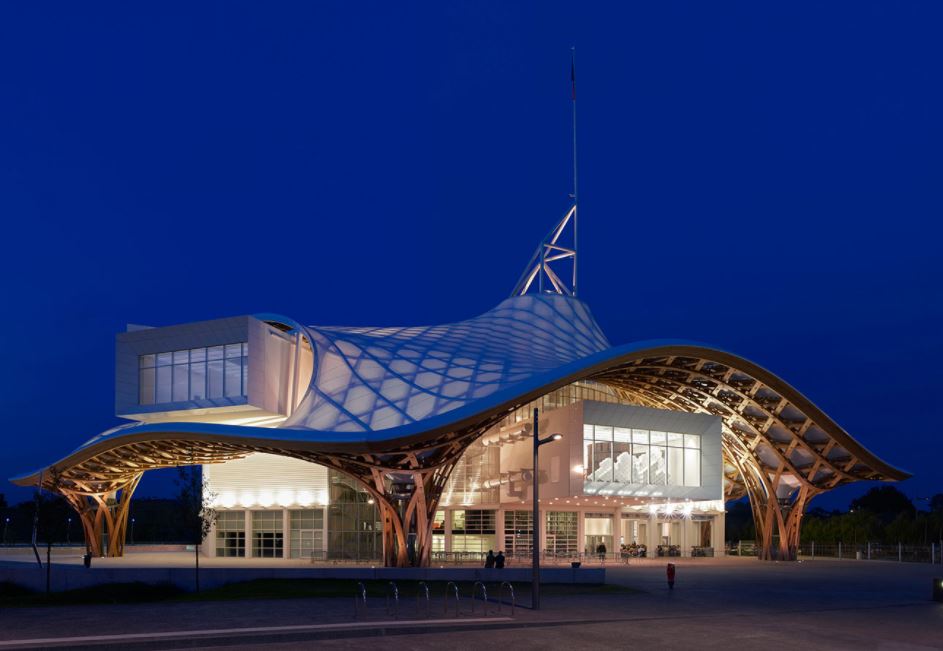
Gridshells with highly irregular geometry are far more challenging to fabricate. In this case, each and every piece had to be custom made to shape; I imagine it must have costed a lot of money, and been a logistical nightmare. Although it is an exceptionally stunning piece of architecture (and a magnificent feat of engineering.)
8.3 – Gridshell Construction
In our case, building these shells is simply a matter of converting the geodesic curves into planks lines.
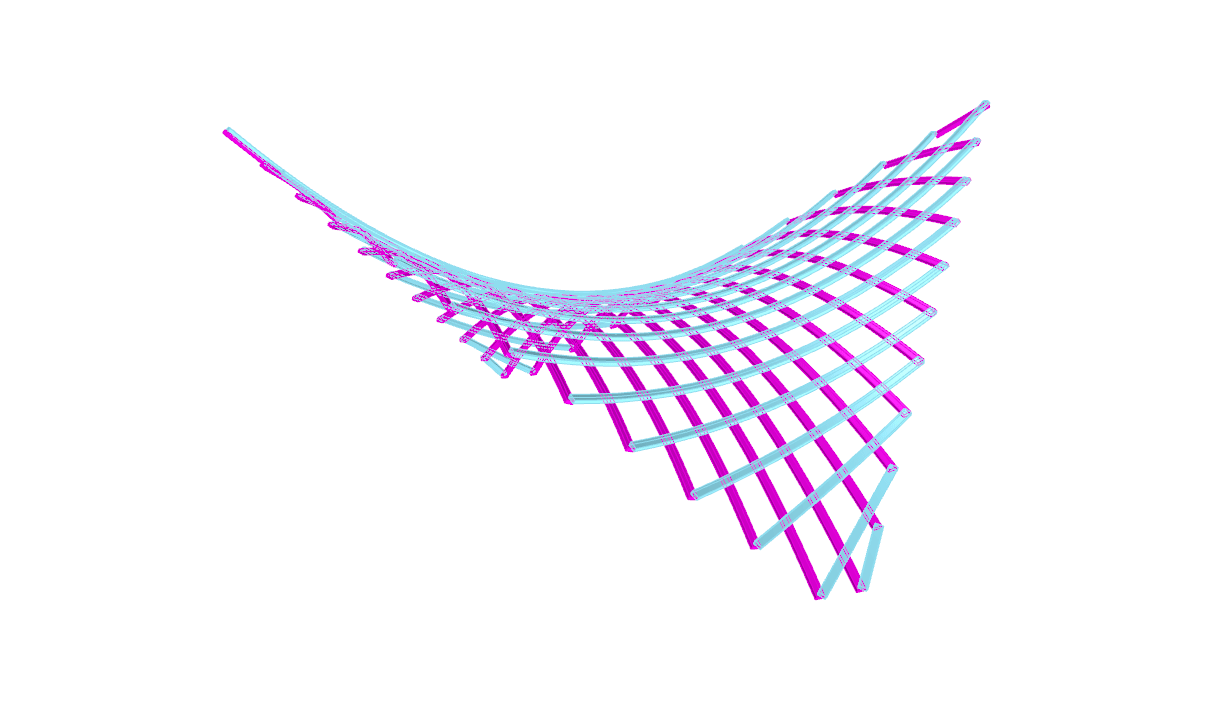
The whole point of using them in the first place is so that we can make them out of straight material that don’t necessitate double curvature. This example is rotating so the shape is easier to understand. It’s grid is also rotating to demonstrate the ease at which you can play with the geometry.
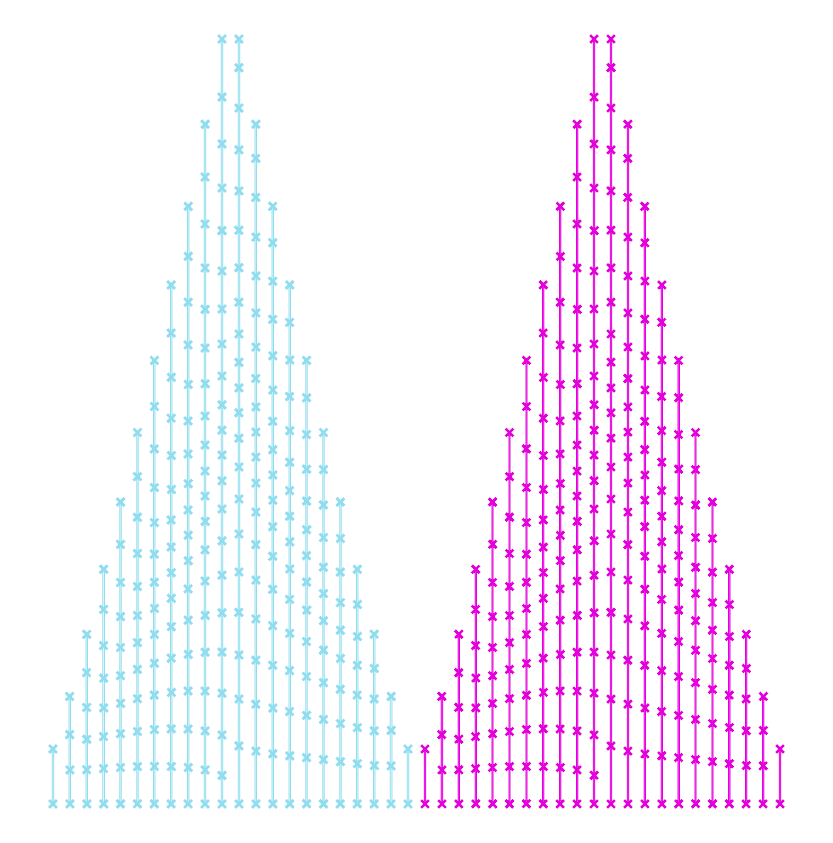
This is what you get by taking those plank lines and laying them flat. In this case both sets are the same because the shell happens to the identicall when flipped. Being able to use straight material means far less labour and waste, which translates to faster, and or cheaper, fabrication.
An especially crucial aspect of gridshells is the bracing. Without support in the form of tension ties, cable ties, ring beams, anchors etc., many of these shells can lay flat. This in and of itself is pretty interesting and does lends itself to unique construction challenges and opportunities. This isn’t always the case though, since sometimes it’s the geometry of the joints holding the shape together (like the geodesic spheres.) Sometimes the member are pre-bent (like Pompidou-Metz.) Although pre-bending the timber kinda strikes me as cheating thought.. As if it’s not a genuine, bona fide gridshell.
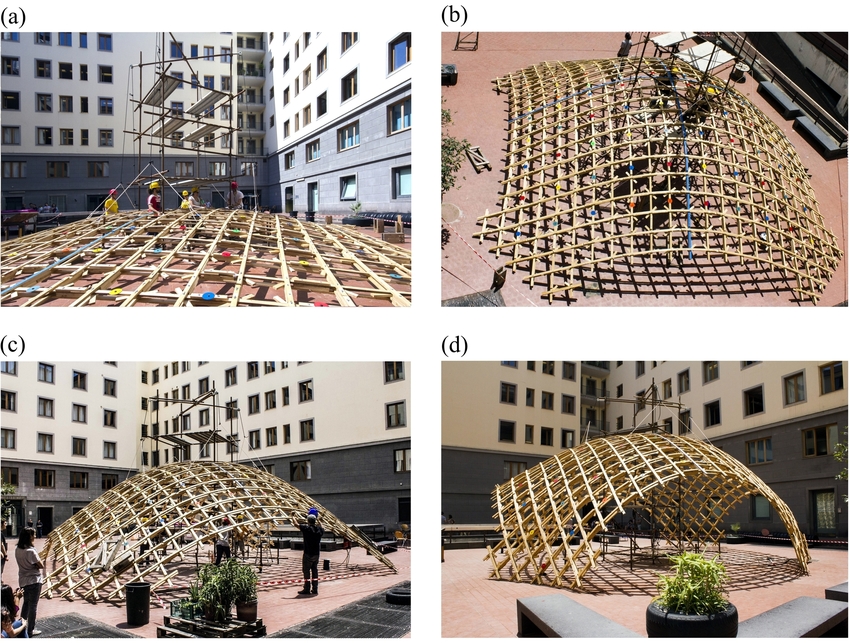
This is one of the original build method, where the gridshell is assembled flat, lifted into shape, then locked into place.
9.0 Form Finding
Having studied the basics makes exploring increasingly elaborate geometry more intuitive. In principal, most of the shells we’ve looked are known to perform well structurally, but there are strategies we can use to focus specifically on performance optimization.
9.0 – Minimal Surfaces
These are surfaces that are locally area-minimizing – surfaces that have the smallest possible area for a defined boundary. They necessarily have zero mean curvature, i.e. the sum of the principal curvatures at each point is zero. Soap bubbles are a great example of this phenomenon.
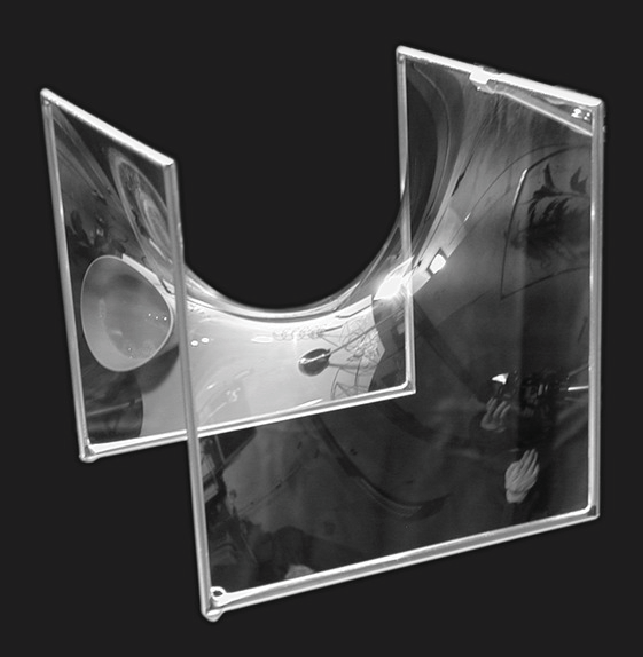
Hyperbolic Paraboloid Soap Bubble [Source: Serfio Musmeci’s “Froms With No Name” and “Anti-Polyhedrons”]Soap film inherently forms shapes with the least amount of area needed to occupy space – that minimize the amount of material needed to create an enclosure. Surface tension has physical properties that naturally relax the surface’s curvature.
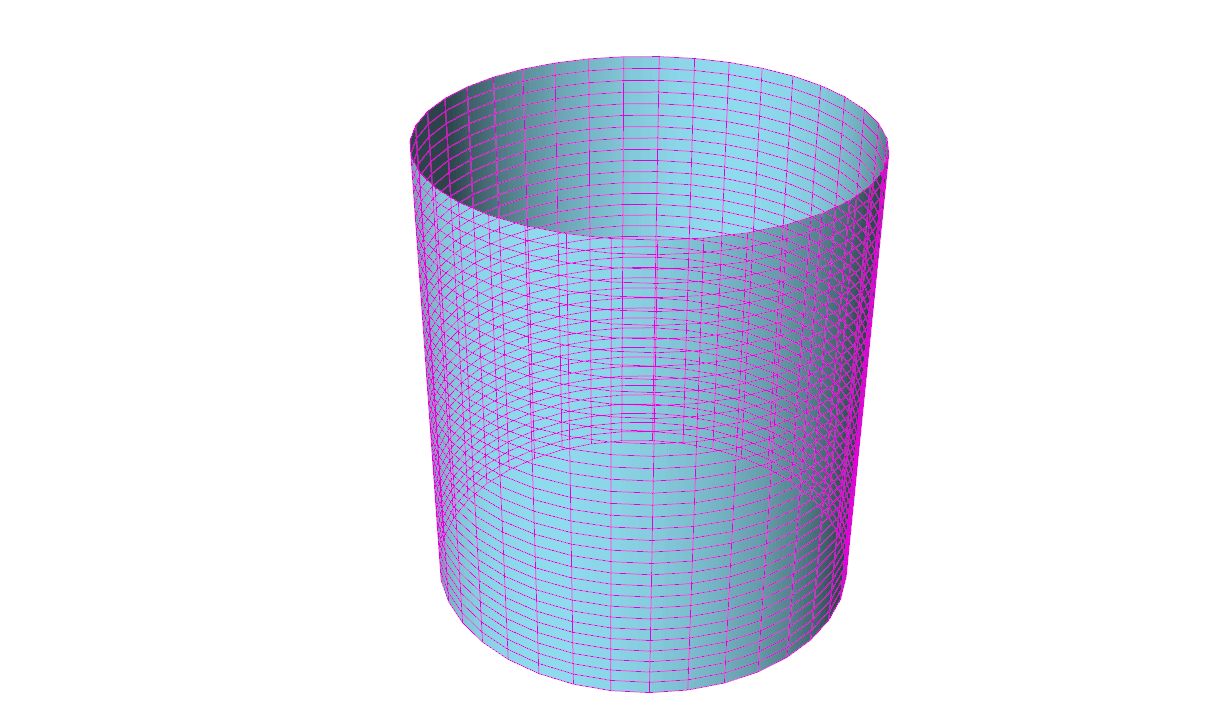
We can simulate surface tension by using a network of curves derived from a given shape. Applying varies material properties to the mesh results in a shape that can behaves like stretchy fabric or soap. Reducing the rest length of each of these curves (while keeping the edges anchored) makes them pull on all of their neighbours, resulting in a locally minimal surface.
Here are a few more examples of minimal surfaces you can generate using different frames (although I’d like stress that the possibilities are extremely infinite.) The first and last iterations may or may not count, depending on which of the many definitions of minimal surfaces you use, since they deal with pressure. You can read about it in much greater detail here: https://tinyurl.com/ya4jfqb2

Here we have one of the most popular examples of minimal surface geometry in architecture. The shapes of these domes were derived from a series of studies using clustered soap bubbles. The result is a series of enormous shells built with an impressively small amount of material.
Triply periodic minimal surfaces are also a pretty cool thing (surfaces that have a crystalline structure – that tessellate in three dimensions):
9.2 – Catenary Structures
Another powerful method of form finding has been to let gravity dictate the shapes of structures. In physics and geometry, catenary (derived from the Latin word for chain) curves are found by letting a chain, rope or cable, that has been anchored at both end, hang under its own weight. They look similar to parabolic curves, but perform differently.
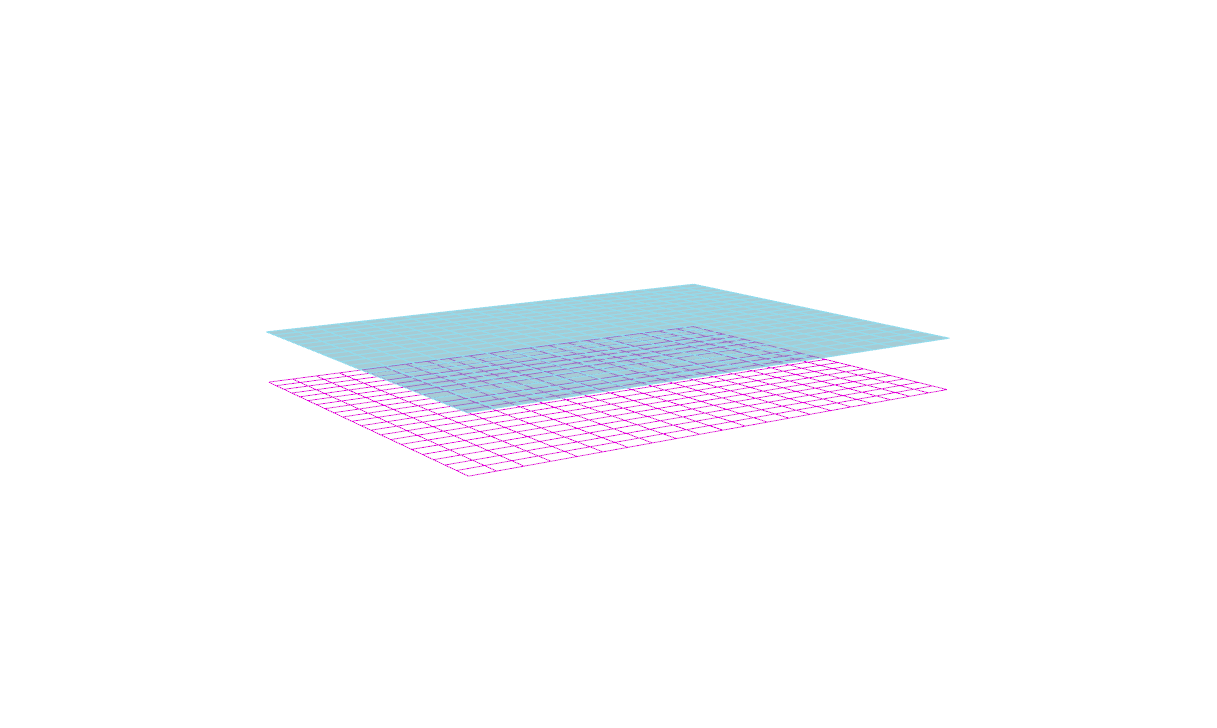
A net shown here in magenta has been anchored by the corners, then draped under simulated gravity. This creates a network of hanging curves that, when converted into a surface, and mirrored, ultimately forms a catenary shell. This geometry can be used to generate a gridshell that performs exceptionally well under compression, as long as the edges are reinforced and the corners are braced.
While I would be remiss to not mention Antoni Gaudí on the subject of catenary structure, his work doesn’t particularly fall under the category of gridshells. Instead I will proceed to gawk over some of the stunning work by Frei Otto.
Of course his work explored a great deal more than just catenary structures, but he is revered for his beautiful work on gridshells. He, along with the Institute for Lightweight Structures, have truly been pioneers on the front of theoretical structural engineering.
9.3 – Biomimicry in Architecture
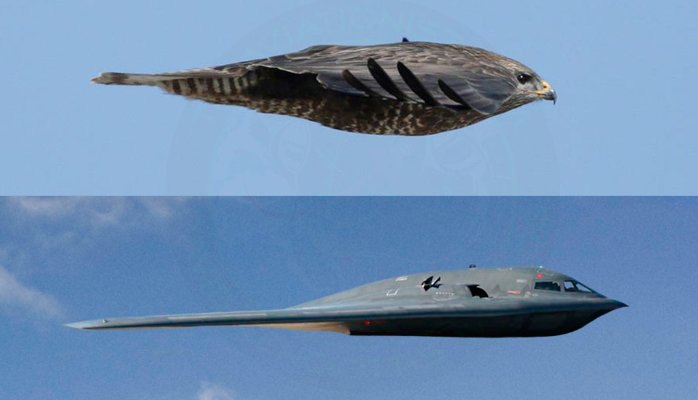
Frei Otto is a fine example of ecological literacy at its finest. A profound curiosity of the natural world greatly informed his understanding of structural technology. This was all nourished by countless inquisitive and playful investigations into the realm of physics and biology. He even wrote a series of books on the way that the morphology of bird skulls and spiderwebs could be applied to architecture called Biology and Building. His ‘IL‘ series also highlights a deep admiration of the natural world.
Of course he’s the not the only architect renown their fascination of the universe and its secrets; Buckminster Fuller and Antoni Gaudí were also strong proponents of biomimicry, although they probably didn’t use the term (nor is the term important.)
Gaudí’s studies of nature translated into his use of ruled geometrical forms such as hyperbolic paraboloids, hyperboloids, helicoids etc. He suggested that there is no better structure than the trunk of a tree, or a human skeleton. Forms in biology tend to be both exceedingly practical and exceptionally beautiful, and Gaudí spent much of his life discovering how to adapt the language of nature to the structural forms of architecture.
Fractals were also an undisputed recurring theme in his work. This is especially apparent in his most renown piece of work, the Sagrada Familia. The varying complexity of geometry, as well as the particular richness of detail, at different scales is a property uniquely shared with fractal nature.
Antoni Gaudí and his legacy are unquestionably one of a kind, but I don’t think this is a coincidence. I believe the reality is that it is exceptionally difficult to peruse biomimicry, and especially fractal geometry, in a meaningful way in relation to architecture. For this reason there is an abundance of superficial appropriation of organic, and mathematical, structures without a fundamental understanding of their function. At its very worst, an architect’s approach comes down to: ‘I’ll say I got the structure from an animal. Everyone will buy one because of the romance of it.”
That being said, modern day engineers and architects continue to push this envelope, granted with varying levels of success. Although I believe that there is a certain level of inevitability when it comes to how architecture is influenced by natural forms. It has been said that, the more efficient structures and systems become, the more they resemble ones found in nature.
Euclid, the father of geometry, believed that nature itself was the physical manifestation of mathematical law. While this may seems like quite a striking statement, what is significant about it is the relationship between mathematics and the natural world. I like to think that this statement speaks less about the nature of the world and more about the nature of mathematics – that math is our way of expressing how the universe operates, or at least our attempt to do so. After all, Carl Sagan famously suggested that, in the event of extra terrestrial contact, we might use various universal principles and facts of mathematics and science to communicate.
Developing Space-Filling Fractals
Delving deeper into the world of mathematics, fractals, geometry, and space-filling curves.
Foreword
4.0 Classic Space-Filling
4.1 Early Examples
In 1890, Giuseppe Peano discovered the first of what would be called space-filing curves:


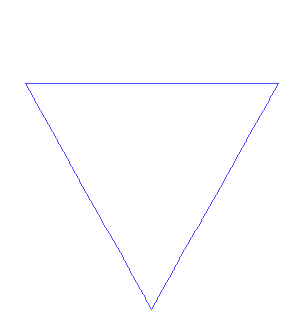

4.2 Later Examples
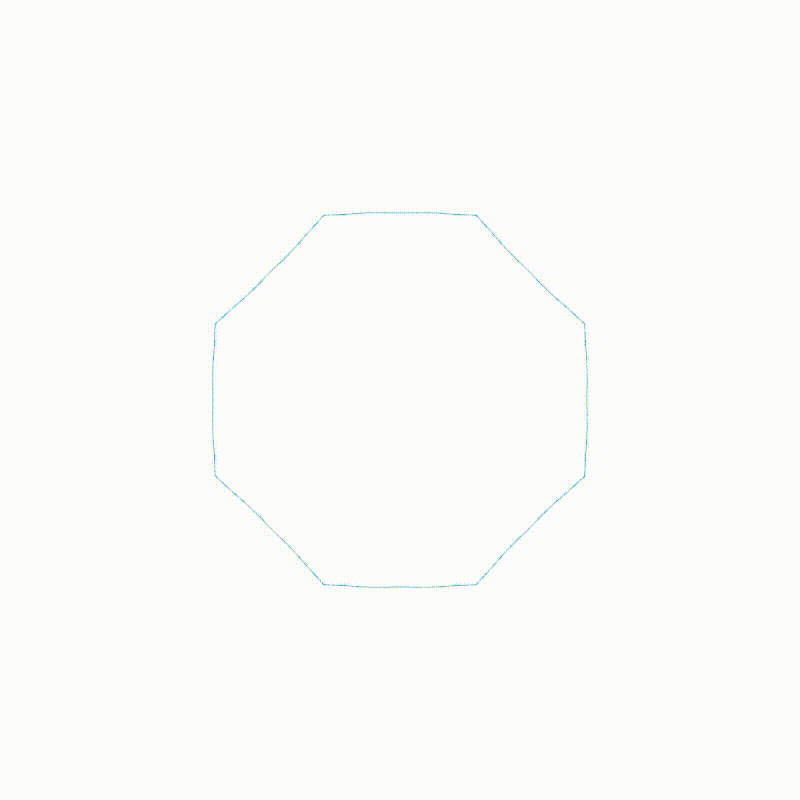
On A Strange Note:

5.0 Avant-Garde Space-Filling
5.1 The Traveling Salesman Problem
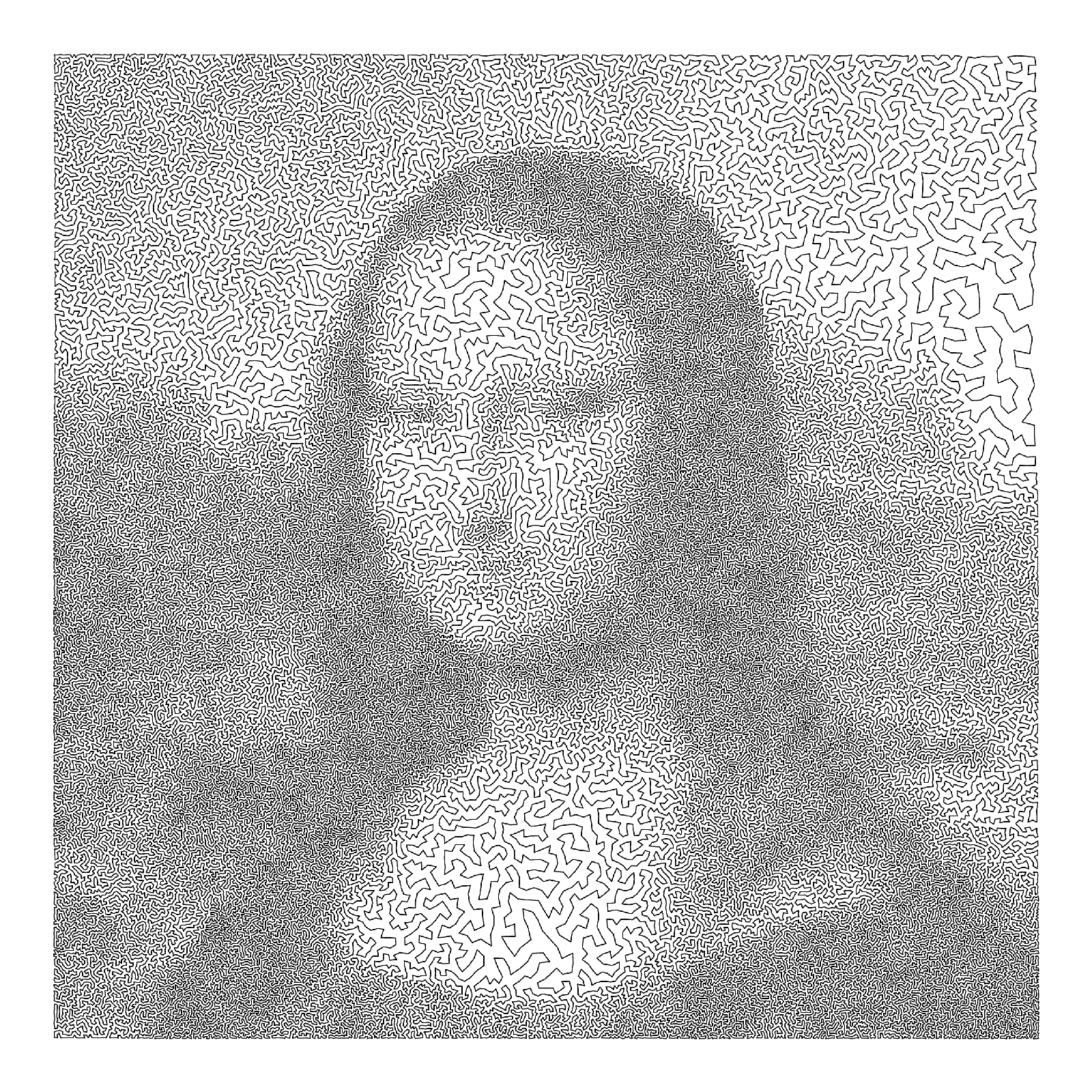
5.2 Differential Growth
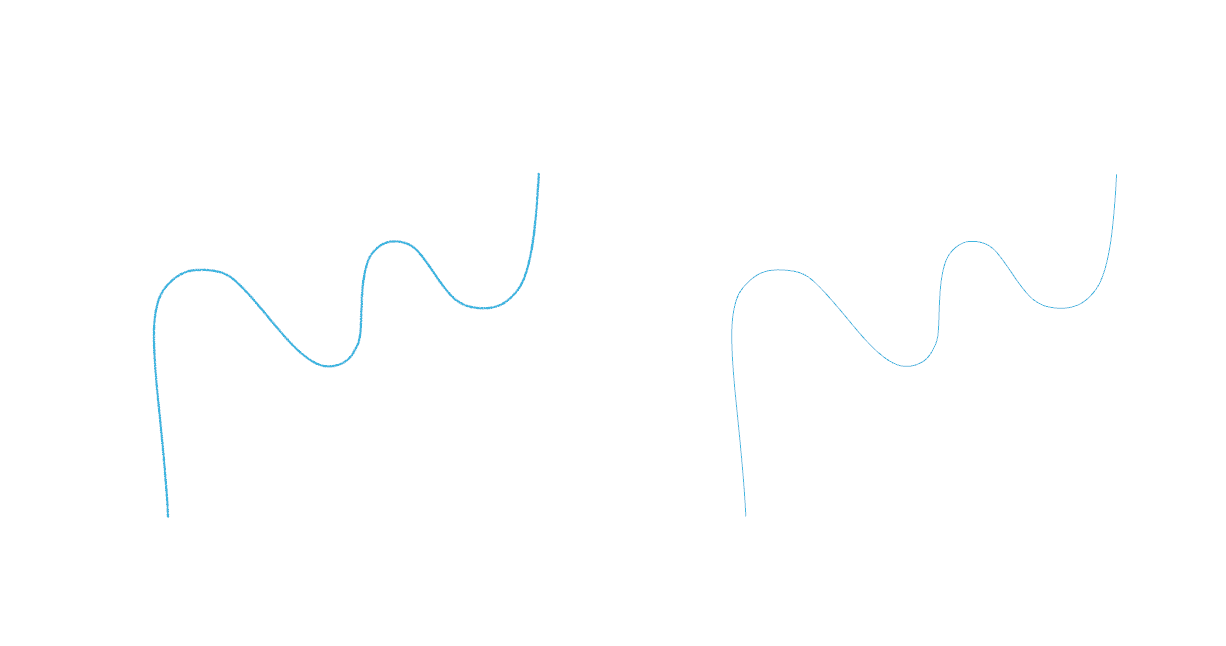
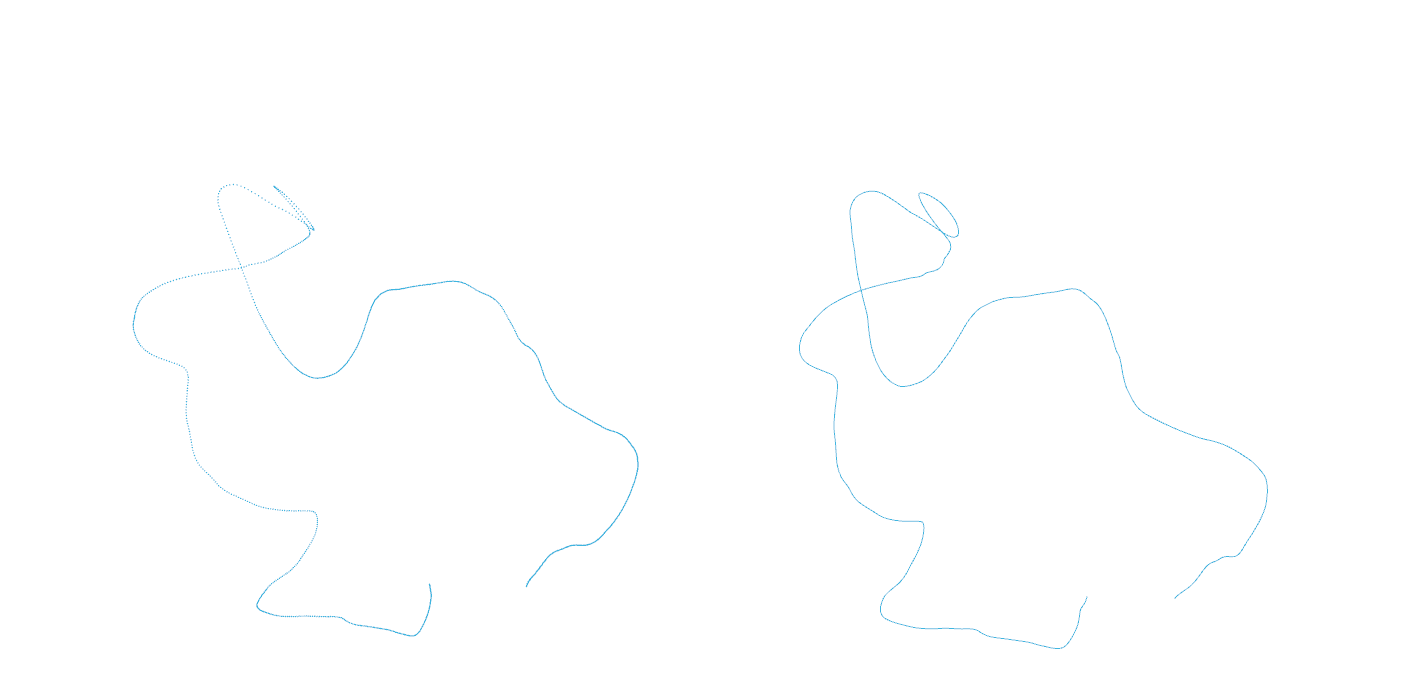
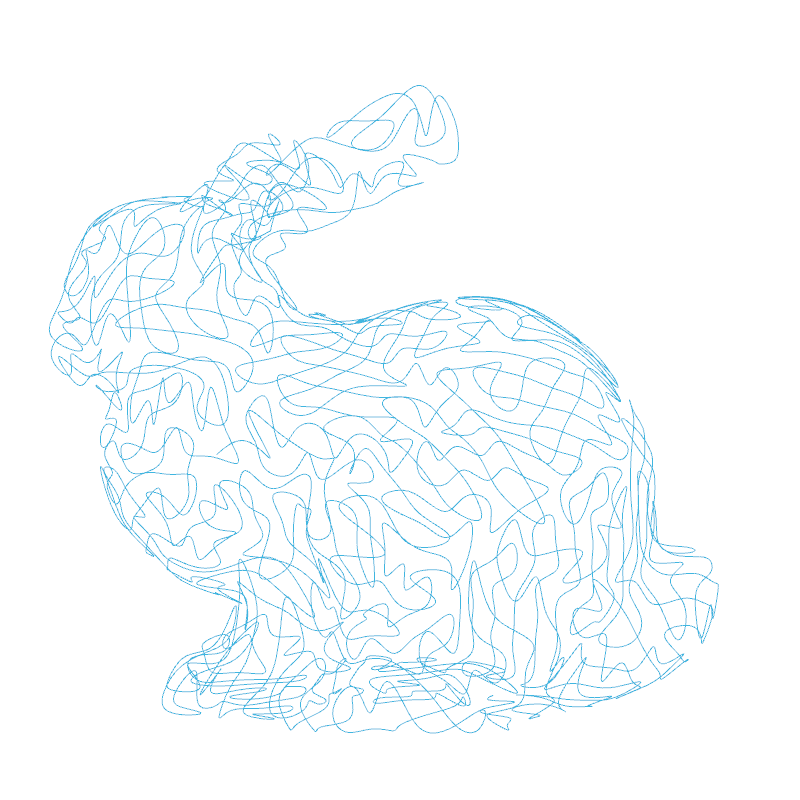


6.0 Developing Fractal Curves
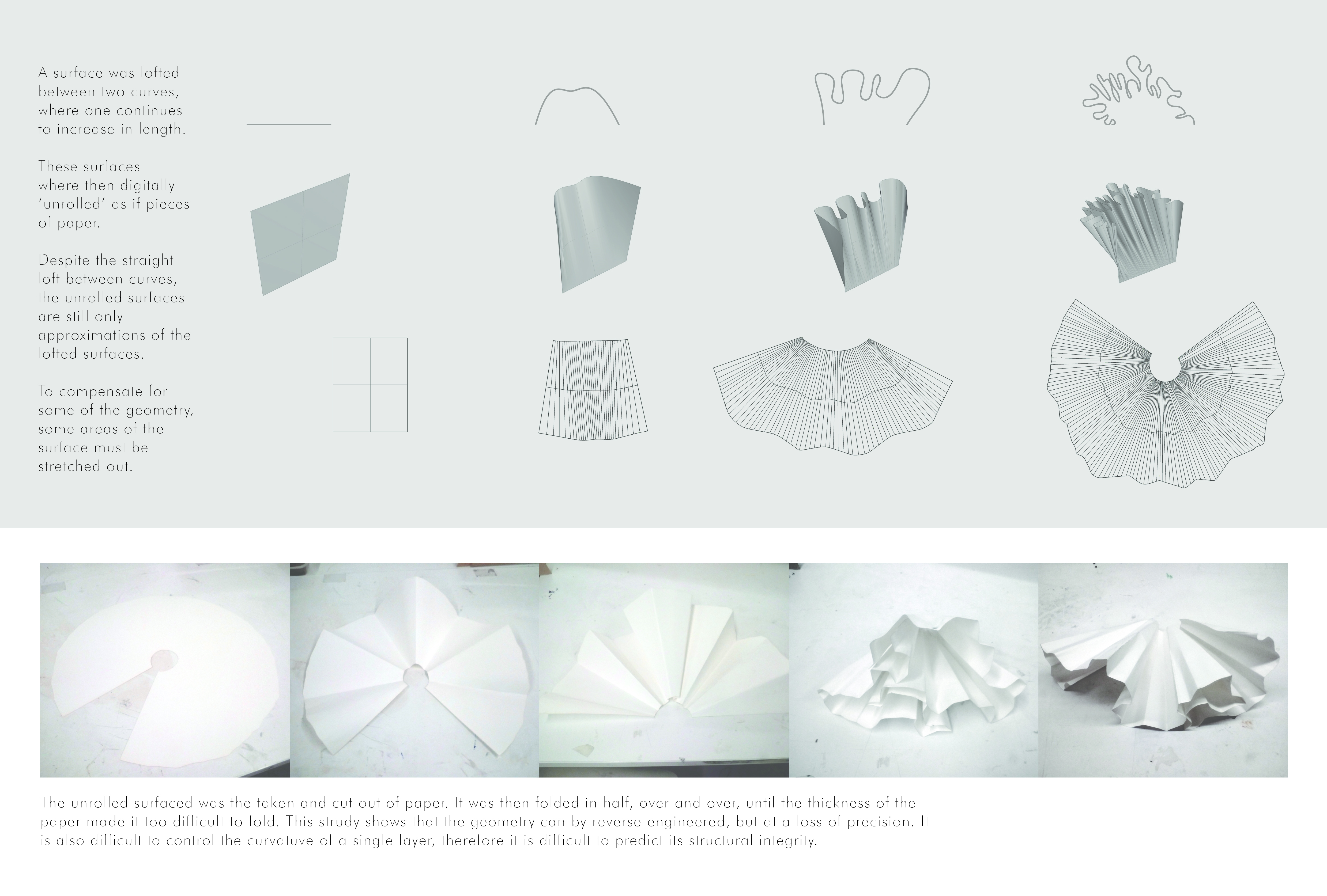
6.1 Dragon’s Feet
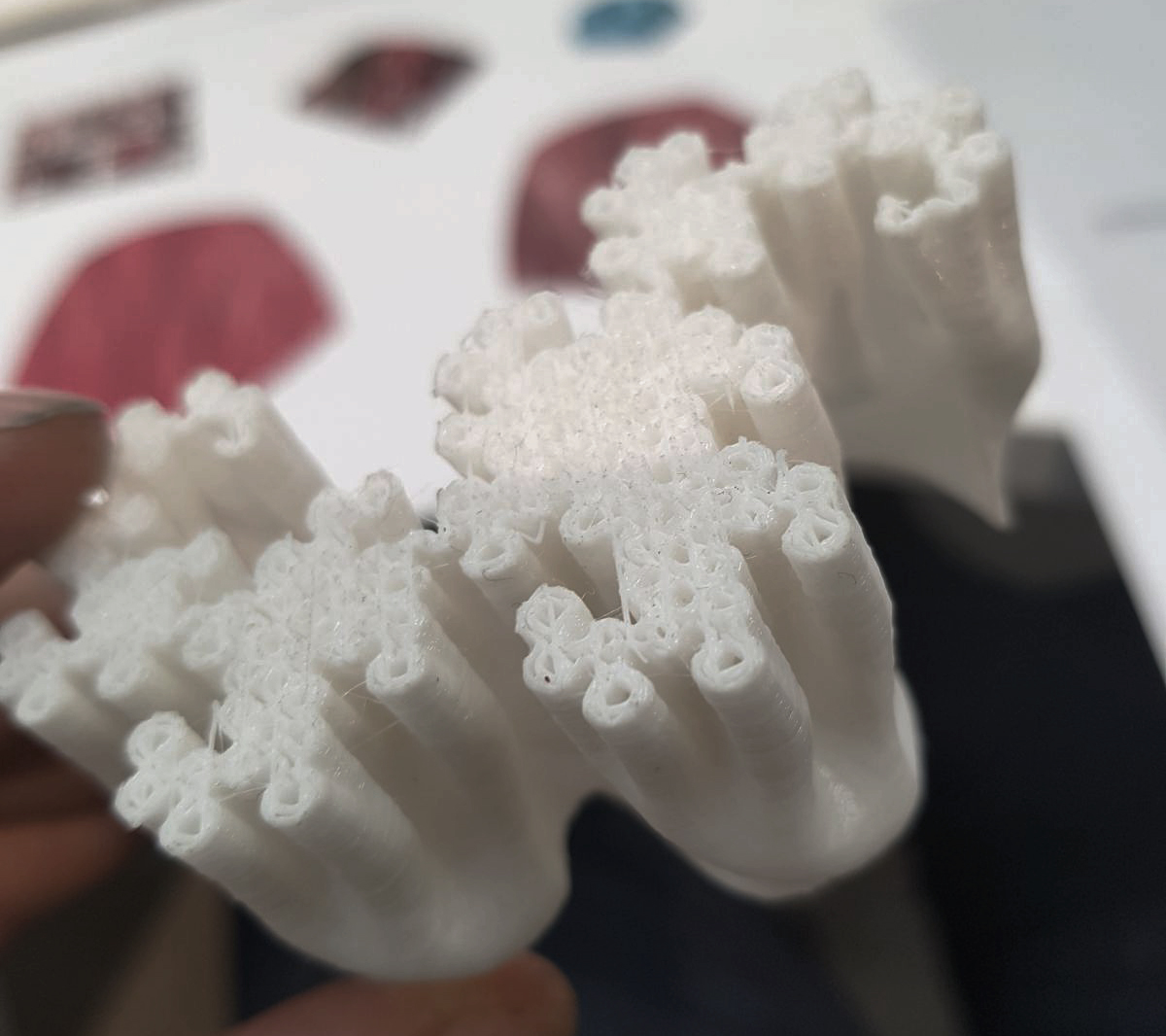
6.2 Hilbert’s Curtain
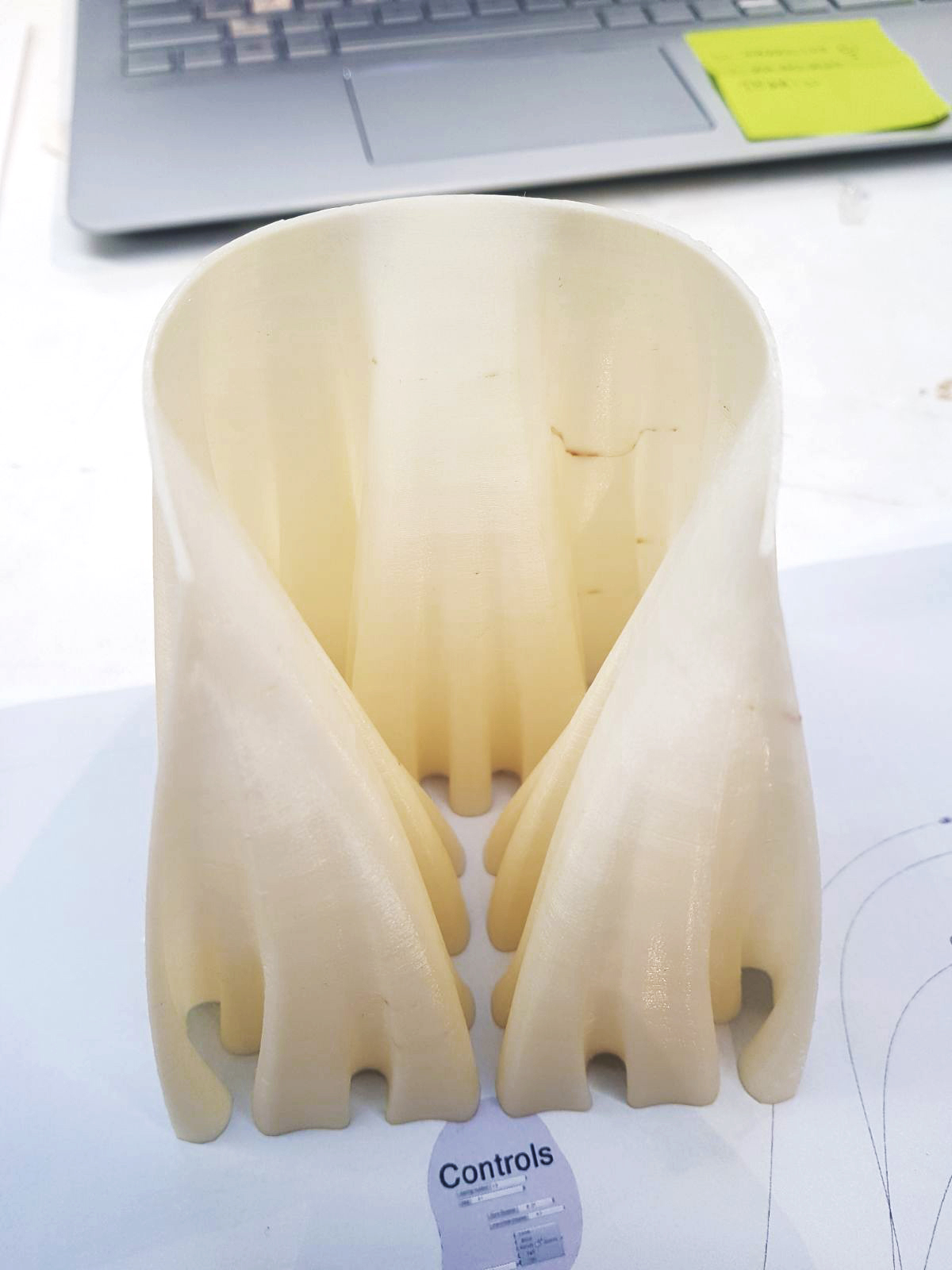
6.3 Developing Whale Curve
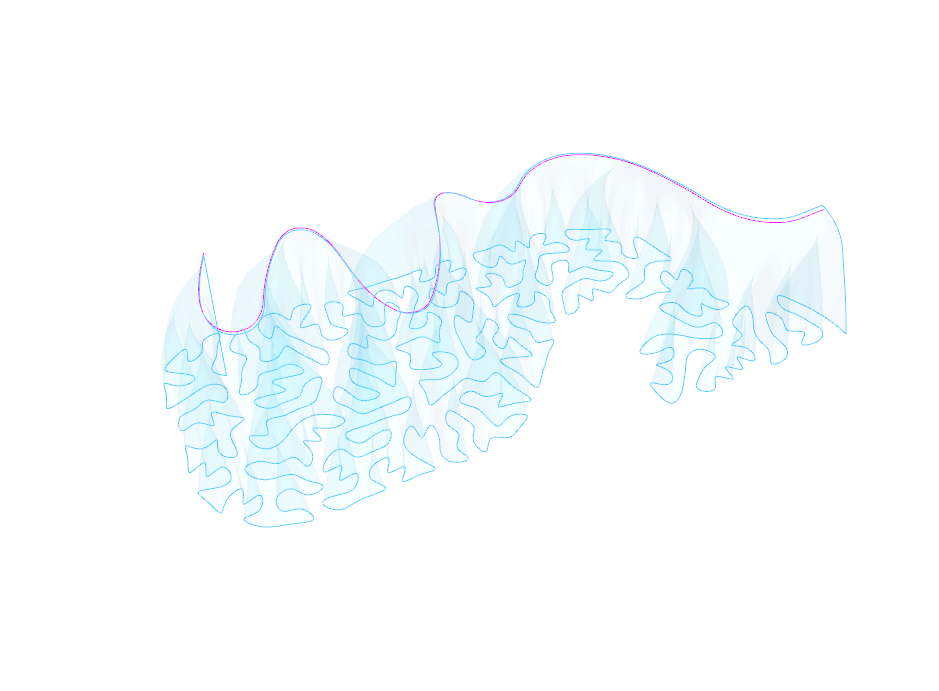
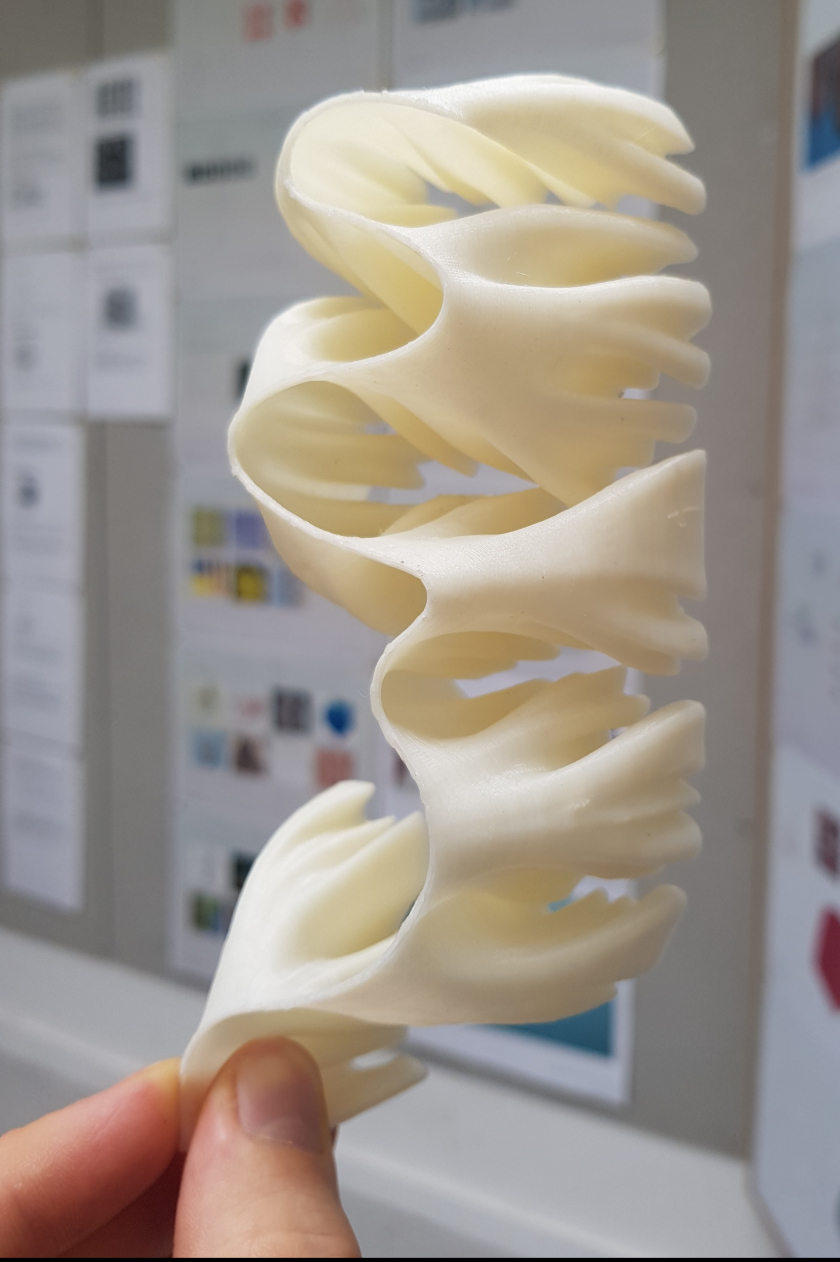
The Wishing Well
something caught in between dimensions – on its way to becoming more.
Summary
The Wishing Well is the physical manifestation, a snap-shot, of a creature caught in between dimensions – frozen in time. It is a digital entity that has been extracted from its home in the fractured planes of the mathematical realm; a differentially grown curve in bloom, organically filling space in the material world.
The notion of geometry in between dimensions is explored in a previous post: Shapes, Fractals, Time & the Dimensions they Belong to
Description
The piece will be built from the bottom-up. Starting with the profile of a differentially grown curve (a squiggly line), an initial layer will be set in pieces of 2 x 4 inch wooden studs (38 x 89 millimeter profile) laid flat, and anchored to the ground. Each subsequent layer will be built upon and fixed to the last, where each new layer is a slightly smoother version than the last. 210 layers will be used to reach a height of 26 feet (8 meters). The horizontal spaces in between each of the pieces will automatically generate hand and foot holes, making the structure easily climbable. The footprint of the build will be bound to a space 32 x 32 feet.
The design may utilize two layers, inner and out, that meet at the top to increase the structural integrity for the whole build. It will be lit from within, either from the ground with spotlights or with LED strip lights following patterns along the walls.

Ambition
At the Wishing Well, visitors embark on a small journey, exploring the uniquely complex geometry of the structure before them. As they approach the foot of the well, it will stand towering above them, undulating organically across the landscape. The nature of the structure’s curves beckons visitors to explore the piece’s every nook and cranny. Moreover, its stature grants a certain degree of shelter to any traveller seeking refuge from the Playa’s extreme weather conditions. The well’s shape and scale allows natural, and artificial, light to interact in curious ways with the structure throughout the day and night. The horizontal gaps between every ‘brick’ in the wall allows light to filter through each layer, which in turn casts intriguing shadows across the desert. This perforation also allows Burners to easily, and relatively safely, scale the face of the build. Visitors will have the opportunity to grant a wish by writing it down on a tag and fixing it to the well’s interior.
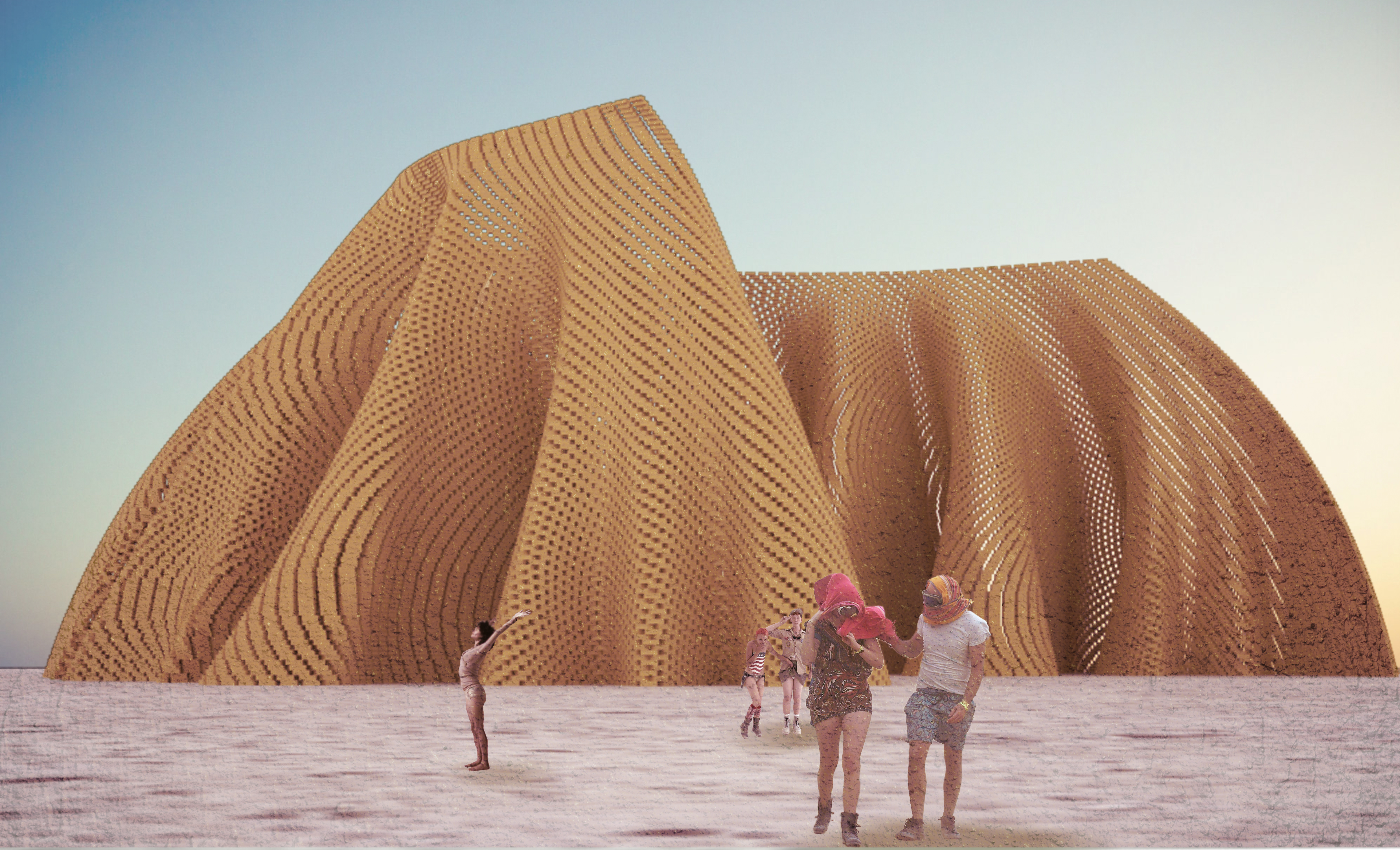
Philosophy
If you had one magical (paradox free) wish, to do anything you like, what would it be?
Anything can be wished for at the Wishing Well, but a wish will not come true if it is deemed too greedy. Visitors must write their wish down on a tag and fix it to the inside of the well. They must choose wisely, as they are only allowed one. Additionally, they may choose to leave a single, precious, offering. However, if the offering does not burn, it will not be accepted. Visitors will also find that they must tread lightly on other people’s wishes and offerings.
The color of the tag and offering are important as they are associated with different meanings:
- ► PINK – love
- ► RED – happiness, joy, success, good luck, passion, vitality, celebration
- ► ORANGE – change, adaptability, spontaneity, concentration
- ► YELLOW – nourishment, warmth, clarity, empathy, being free from worldly cares
- ► GREEN – growth, balance, healing, self-assurance, benevolence, patience
- ► BLUE – conservation, healing, relaxation, exploration, trust, calmness
- ► PURPLE – spiritual awareness, physical and mental healing
- ► BLACK – profoundness, stability, knowledge, trust, adaptability, spontaneity,
- ► WHITE – mourning, righteousness, purity, confidence, intuition, spirits, courage
The Wishing Well is a physical manifestation of the wishes it holds. They are something caught in between – on their way to becoming more. I wish for guests to reflect on where they’ve been, where they are, where they are going, and where they wish to go.
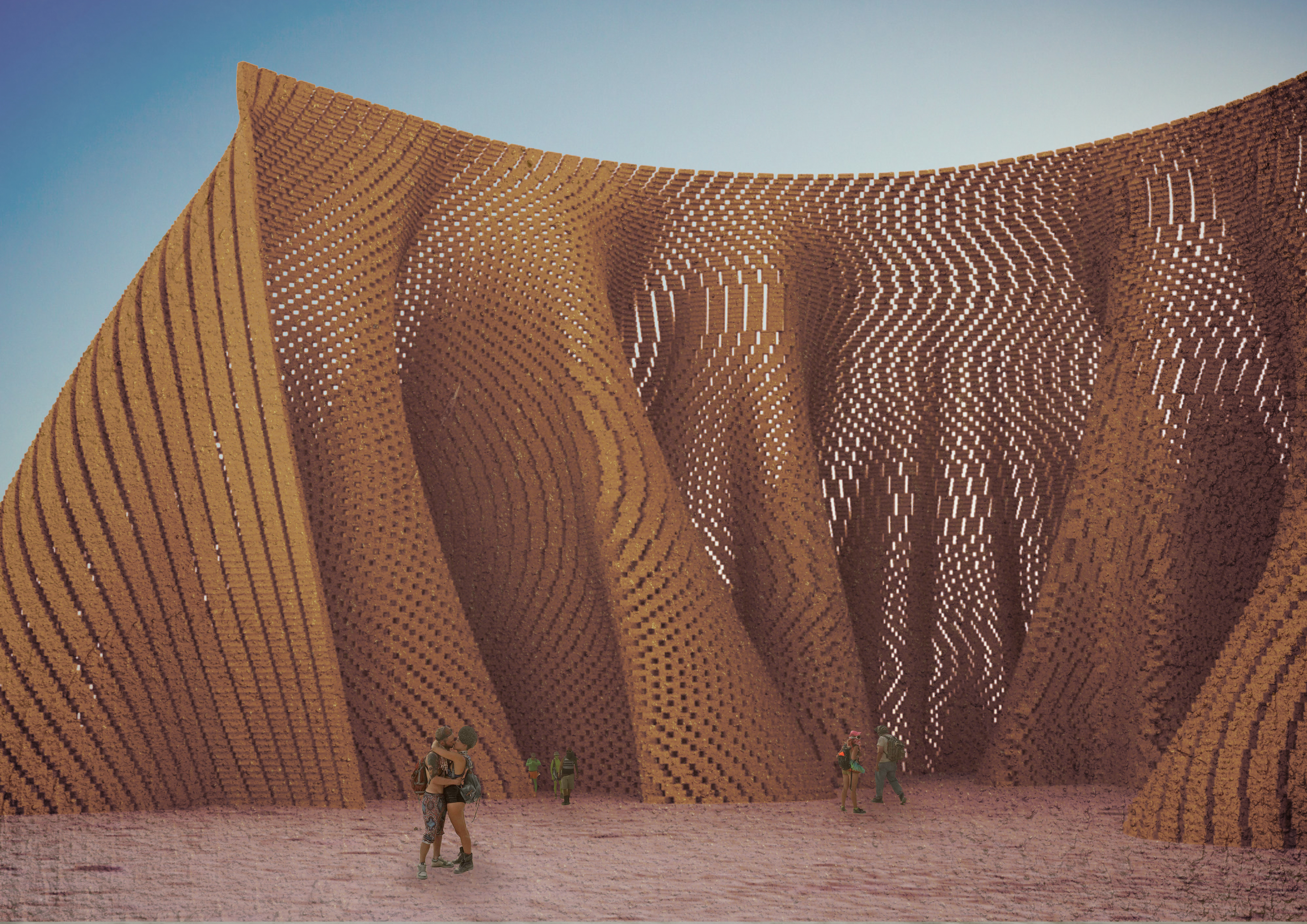
Celestial Field
Whatever your creed your reliance on the sun is unquestionable.
We have worshipped it as a God.
Spent lifetimes studying it through science.
Yet human hands will never touch its surface.
Celestial Field brings our sun to the Playa for us to dance in its glory.
Triggering our own solar flare.
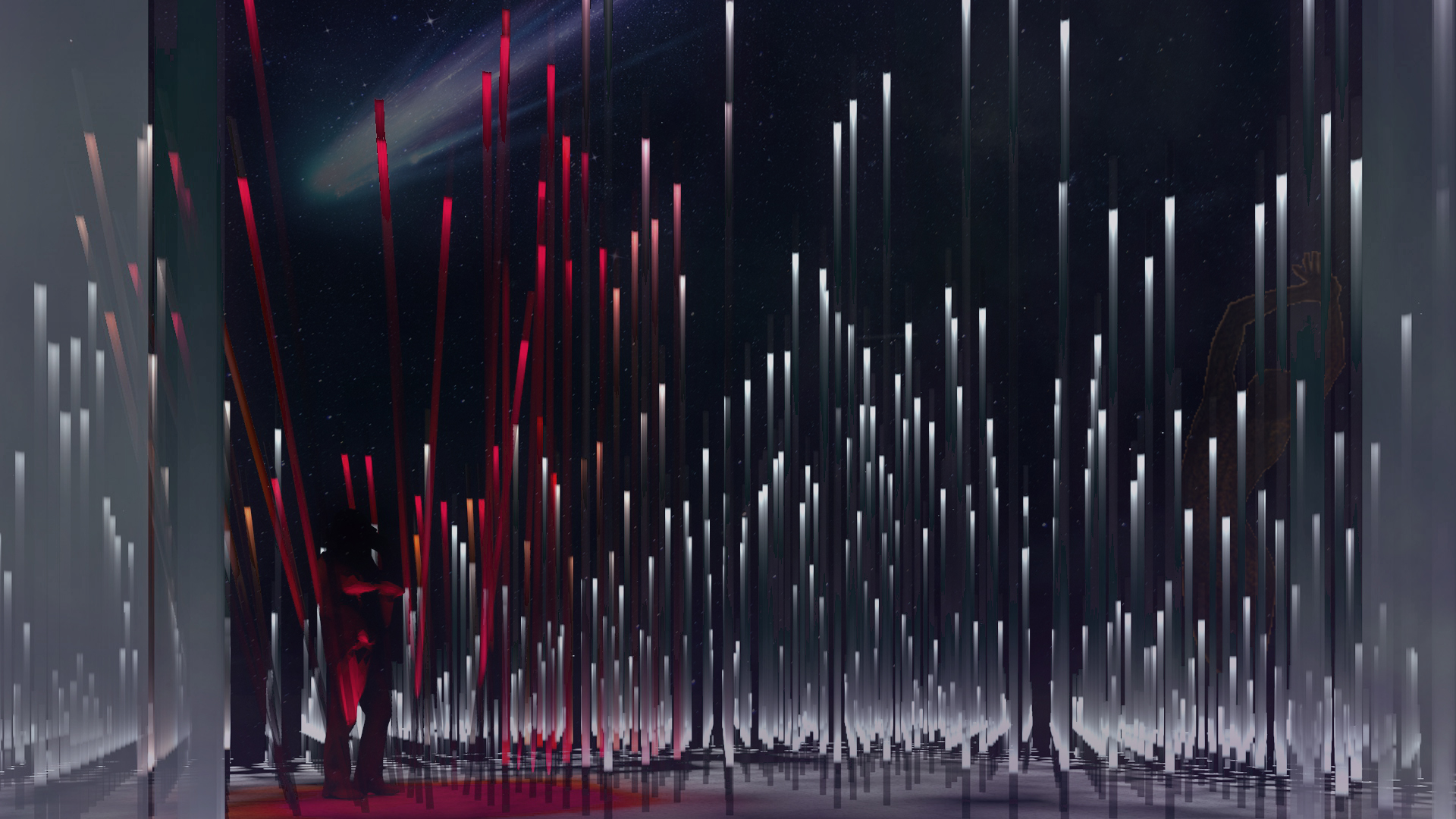
From the dawn of time the sun has been a constant in human life. It has been central to the beliefs of nearly every civilisation throughout history. What was once an astrological wonder sustaining life; dictating when to plant and harvest our crops; evolved into a god and deity, woven into the stories and teachings of nearly every culture, from the Egyptians to the Ancient Greeks and even Christianity.
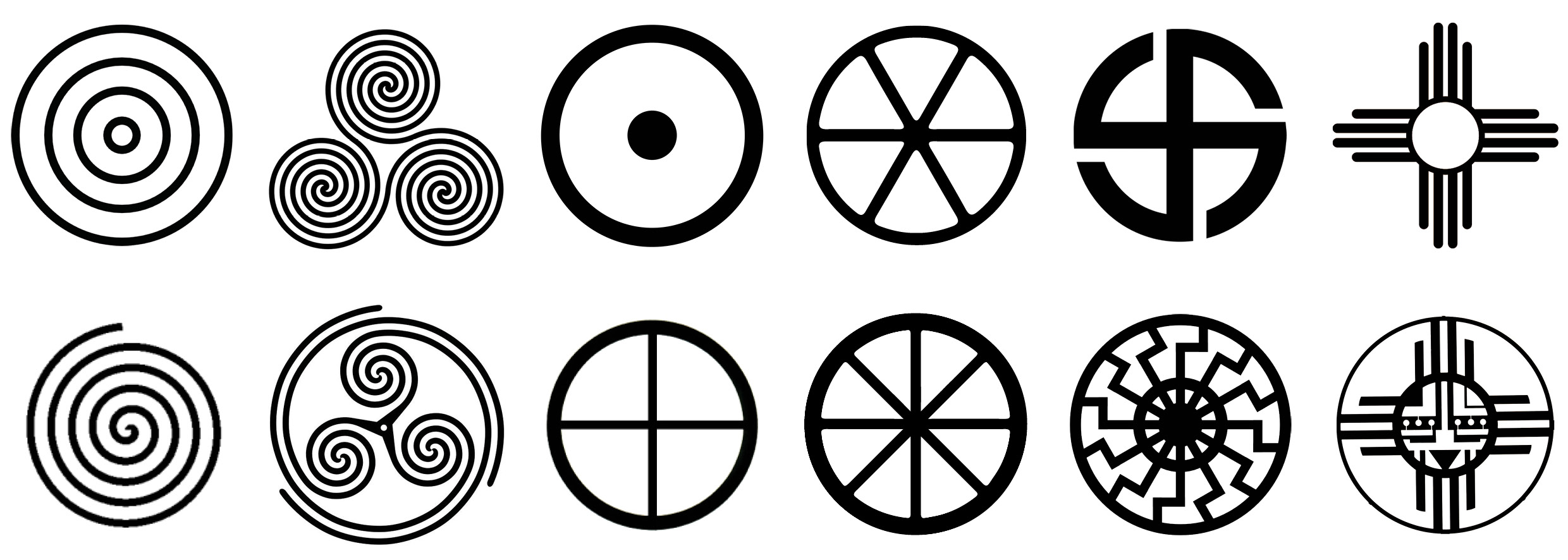
The oldest man-made structures in the world have resounding astrological connections to both the sun and constellations, covered in carvings they unquestionably align to major astrological events.
Newgrange in Boyne Valley, Ireland, thought to be built in 3500BC, has a tomb in which sits a stone basin lit by a single beam of light at sunrise on the winter solstice.
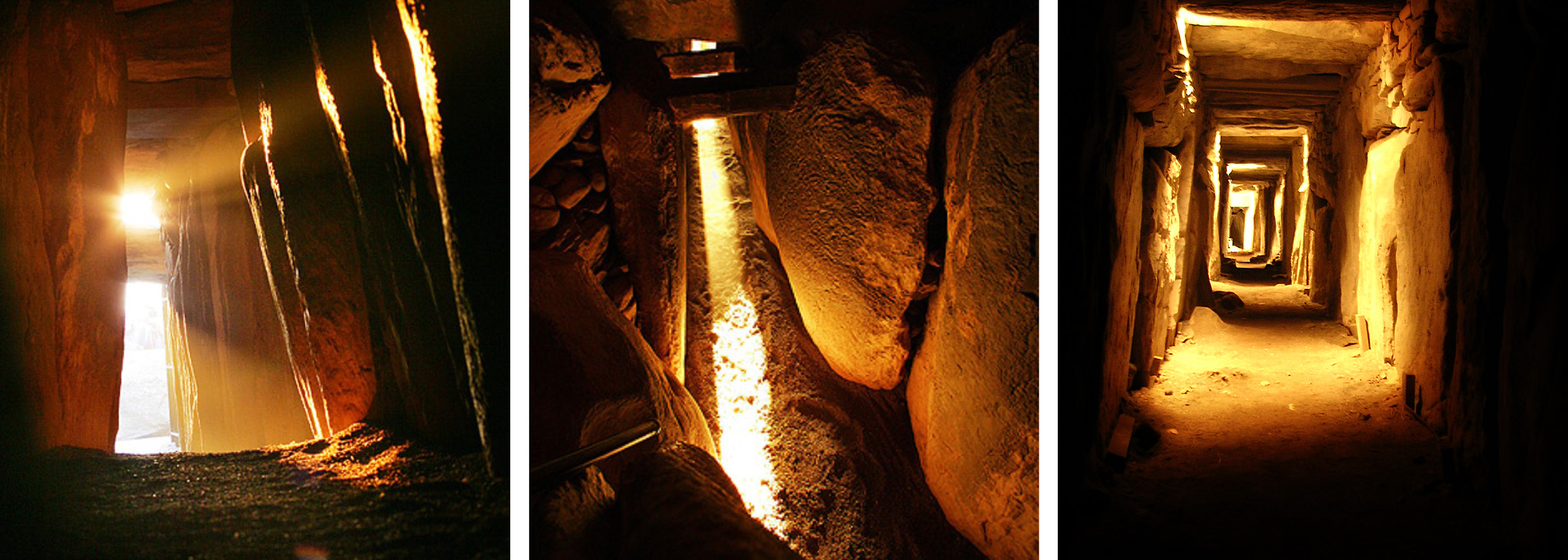
The Egyptians, Greeks, and Christians have all referenced the sun within their religion and beliefs.
The Egyptians in 3000BC had Ra, the Greeks in 400BC believed Helios to be God of the sun, and Christians have often depicted Jesus in front of what is thought by many to be the solar cross.
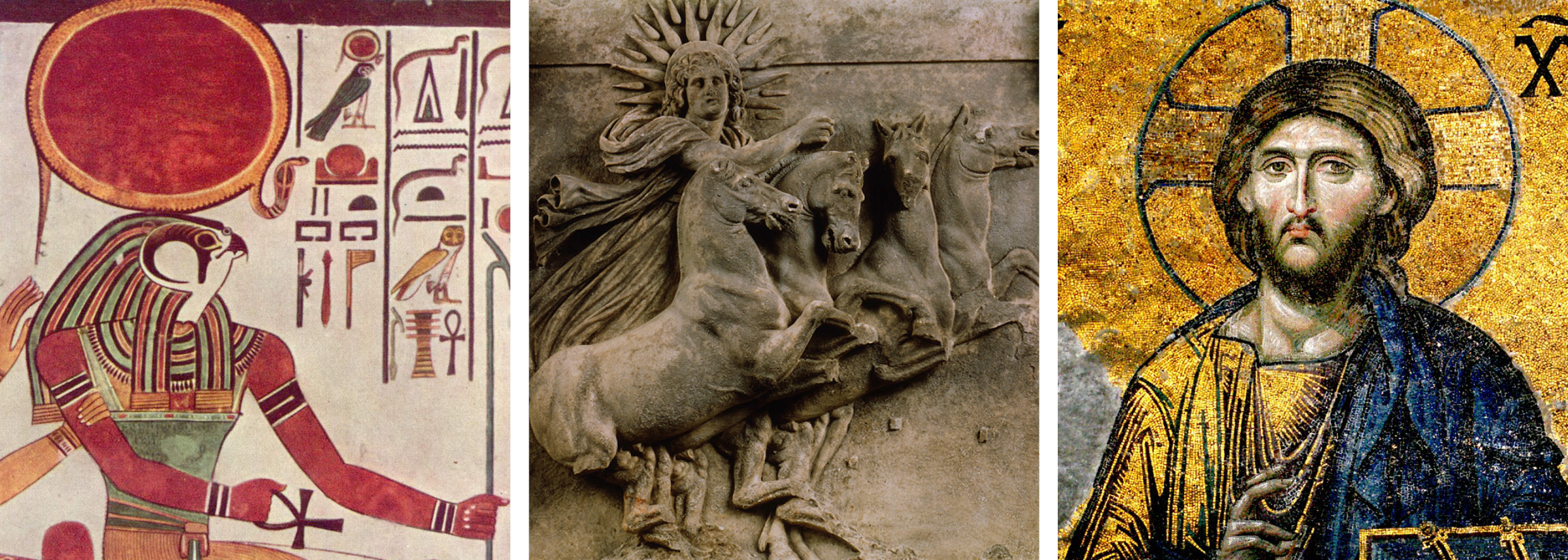
In the past the sun has been depicted as a 2Dimensional disk of light travelling across the sky before dying only to be reborn at sunrise.
The Ancient Greeks believed Helios to be the personification of the sun. A man with a many rayed crown of light, pulling the sun across the open sky with a horse drawn chariot. The Helios named after the Greek god has been used and adapted through the ages, with one of the most recognisable iterations being the logo of global corporation BP which symbolises “a number of things – not least the greatest source of energy … the sun itself..” – bp.com
This once celestial being has now become a tangible thing. Through advances in our technological and scientific capability we have gained an understanding of the suns chemical make-up, uncovering many of its secrets from sun spots to solar flares. Although we have developed an increased understanding of the forces driving the sun, it is still no more accessible to us mere humans than on the first day on earth remaining an impenetrable sphere in the sky only to viewed from a far.
The suns surface has taught us much. Galileo’s sun spot diagrams unknowingly demonstrated the unique fluidity of the suns chromosphere. Further study of these sun spots and magnificent solar flares proved that the surface of the sun is covered in billions of interlaced magnetic fields all interacting together to form the whole. When these fields cross swirling plasma burst in an instance out into the corona bringing with it immense light displays that can be seen on earth as the aurora.

In an age where endless streams of newfound knowledge are accessible with the touch of a finger – it is easy to lose our sense of innocent amazement and unquestioning awe. We have a constant need for explanation of why and how phenomena exist, no longer blindly excepting their beauty and revelling in it.
The indescribable beauty of these gigantic magnetic fields can often be lost and forgotten in the mundane when scaled down to earthly objects. Viewing them at a micro scale allows us to connect with their other-worldly nature.
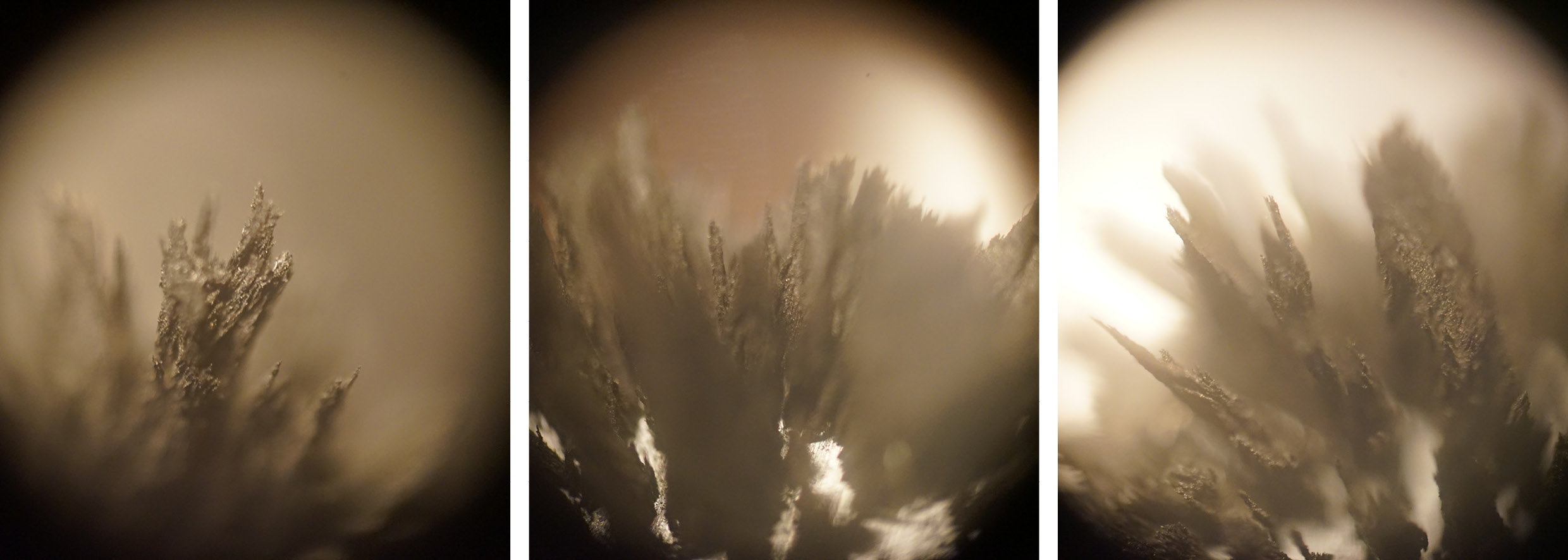
Science has taught us how a magnet attracts and repels enabling use in industry, medicine and everyday life. And as our knowledge expands, we move from child to adulthood and our desire to play diminishes – burdened by explanations and reasoning; we are no longer in awe of our ability to make metal move without laying hands on it. It has become the norm and the expected, it is no longer ‘magic’.
Life should be fun and full of mesmerising moments. Our increased knowledge should enable and enhance our experience of ‘magic’ not hinder it.
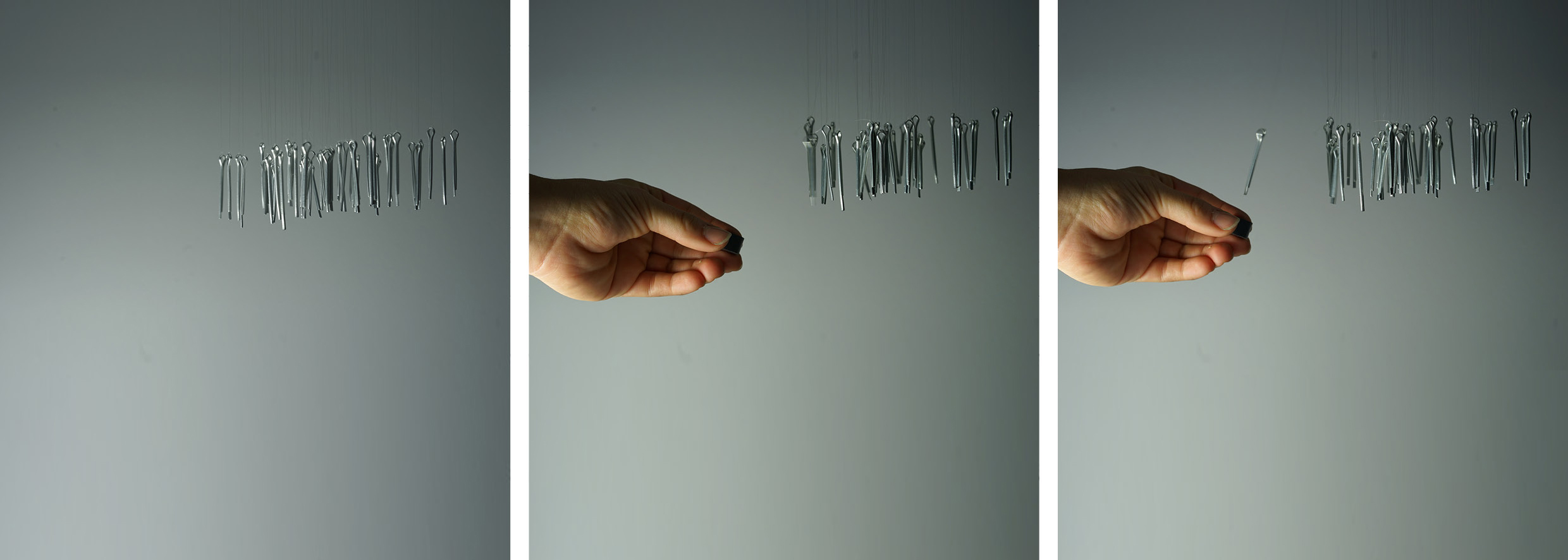
Celestial Fields captures the unexplainable wonderment the sun once held and makes it accessible through modern mediums, combining two worlds; science and enchantment, imbedding them on the Playa at Black Rock City, Nevada, for people to explore and lose themselves in.
Thousands of swaying rods made of tubes of one-way mirror form an undulating field, rising high above your head, and falling like the plasma pulled in all directions by the phenomenal magnetic forces found on our sun.
By day a field of mirrors reflect and intensify the suns natural beauty and power. Creating a maze of ever changing light to explore, push through and play within. At sunset everything transforms. The field morphs, bursting into a sea of glowing beams reacting to movement and mimicking the fluid, almost pulsing nature of the suns corona.
Like the chromosphere, magnetic fields have informed density and pattern, creating patches of pure brightness and areas as dark as sunspots. With each rod built on a spring loaded base it can be pushed a manipulated, enabling you to forge your own path through the densest areas of Celestial Field, parting rods like magnets repelling polarised iron.
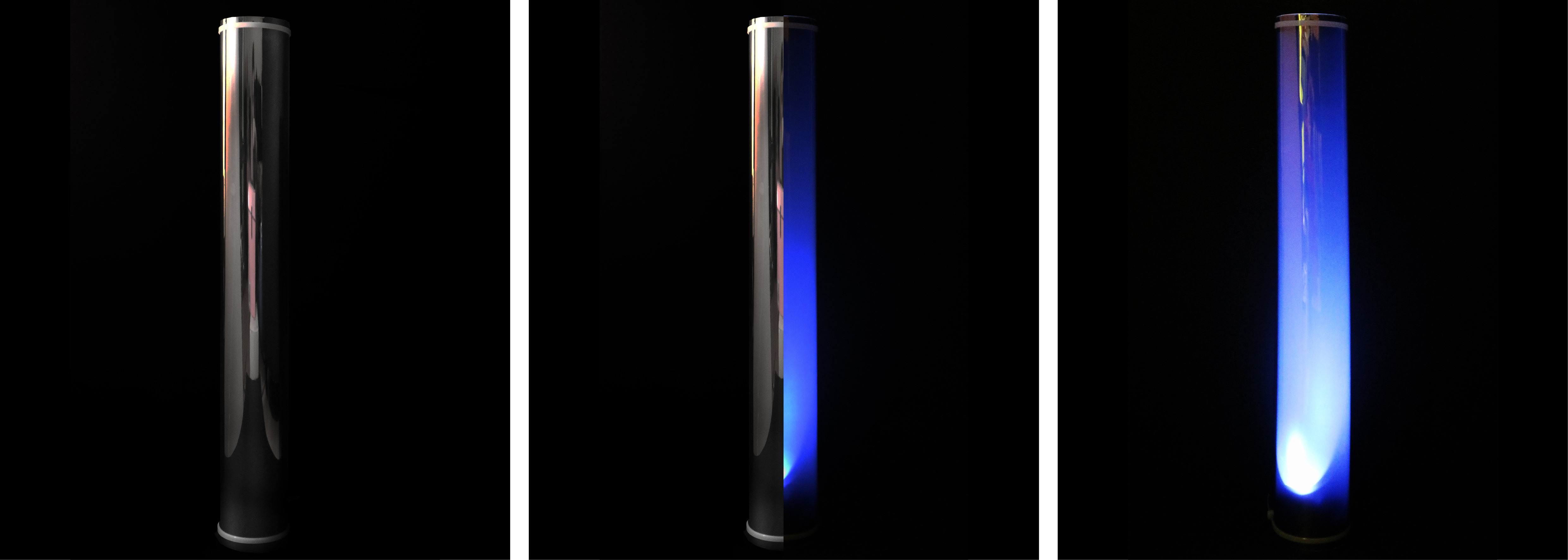
Movement through the sprung rods creates interest not only for the participants but also onlookers. During daylight hours people weaving in and out can be seen across the playa through the constant glinting of the sun on the reflective rods. An ever changing shimmer, like sunlight dancing across water in the distance, drawing people in from all directions out of wonder and intrigue.
Once the sun has set the lights come on, and the show only gets better. The rods now glow and pulse, changing colour, transforming the world around them – each equipped with a sensor so as to react to movement as people push past; creating tracks of swirling light shifting like the turbulent surface of the sun. Areas of intense and overwhelming light can occur when people team together to trigger a cluster of rods forming a concentration of light evocative of a solar flare.
The sun is not solely about light, with it comes inevitable darkness. Shadows too have been used throughout time as a symbol in opposition to that of the sun; and in this instance the areas of shadow formed in the magnetic layout create areas of calm within the thrill of the lights where one can sit and ponder everything from the dessert to the sky and the sun that brings life to earth.
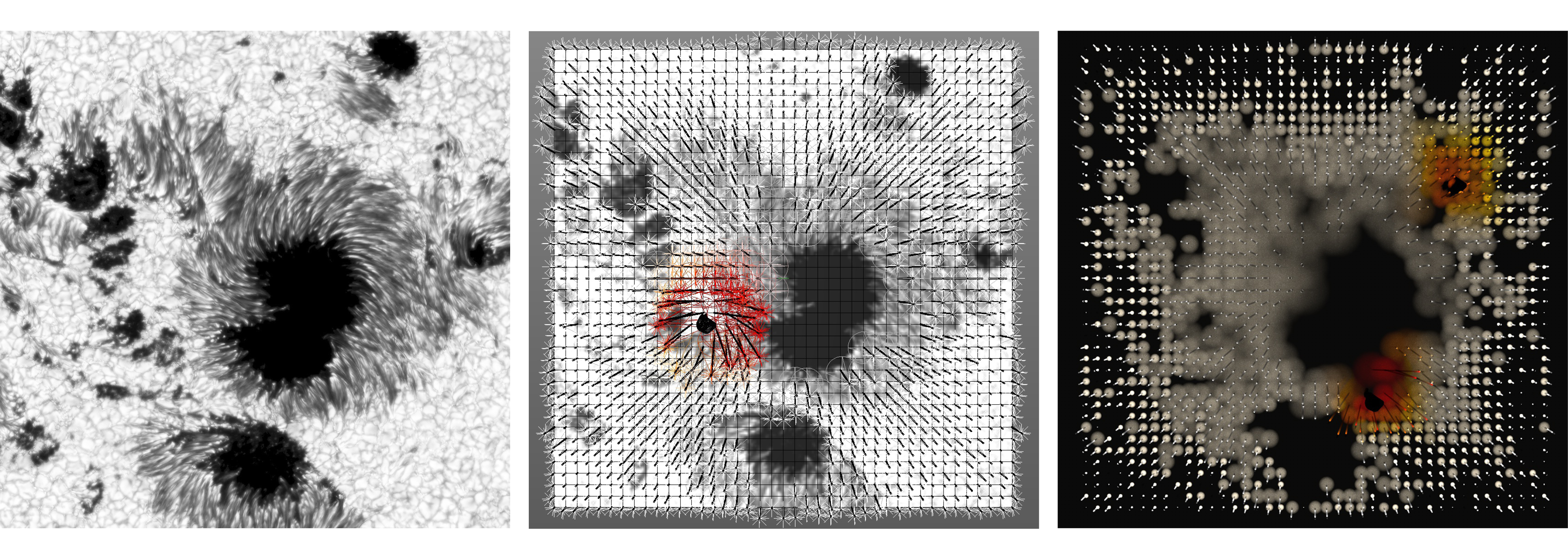
What was once worshipped as a distant god and celestial being can now exist on the surface of the earth as a Celestial Field in Nevada. The sun has risen and set, bringing with it heat and light; powering life on earth since the dawn of time, a focus of incomprehensible wonder and fascination for each and every culture across the globe.
Celestial Field intends to reignite our faith in the intangible, while showing us there are powers and beauty still to be found in the modern world.
Love Nest
Love at Burning Man
 The Heart is an internationally known Symbol for Love.
The Heart is an internationally known Symbol for Love.
The Love Nest is a Pavilion designed for Burning Man as a destination to express your Love to another. Wedding ceremonies will take place within the Heart structure, this is the biggest gesture of Love, joining together as one, declaring your Love for everyone to see
The wooden hearts floating toward the sky create a Tower of Love



Developing the Love Nest
The origin of the Heart Symbol

Symbols as a System


At Burning Man within the Temple (also known as the Temple of Love) people leave messages to remember there loved ones that they have lost, the temple is then burnt so the messages can get to those who are being remembered. The Idea of the below design was inspired by a book, being a place of words, people add to the pages of the book of love.
Interlocking Hearts – Heart Tower

 The Tower
The Tower
Every time someone is married within the Tower a coloured heart is added to the Structure. 
Progression of the Form
Developing the design to be more fluid and natural, as love isn’t hard and spiky.

Bending Hearts
Looking at different ways of bending wooden Hearts to be able to work with the newly designed form and being able to attach to the ‘Ribs’ of the design. I looked at two ways of achieving this:
Laser Cutting
By laser cutting a line pattern into the heart I achieved a material that bends easily
Cutting and folding
Cutting a slit from the bottom of the heart to the centre and taking the two half and bending one on top of the other
Results – The Laser Heart bent easily but did not stay in place and became more fragile whereas the folded heart keeps its shape and is a more solid form



Folding Hearts – Further Research
Looking at what effects the curvature of the heart.
Variable – Length of cut for bending
Results – The Longer the cut the smoother the curve

Final Design – Love Nest
The Final Design looks at creating a form by connecting the folding hearts, removing the structural ‘Ribs’ from the previous design and creating a system to achieve a Form

Love Nest – Final Model



Thousand Line Construction
Thousand Line Construction :
Hamish Macpherson
A spatial exploration into the interplay of materials, construction techniques, and delicate and precise design.
Inspired by Hanakago; the craft of Japanese Bamboo basketry, to celebrate the western discovery of tea and its associated culture during the renaissance.



Deployable structures
A deployable structure includes an enclosed mechanical linkage capable of transformation between expanded and collapsed configurations while maintaining its shape.
These types of structures have the advantage of creating versatile, modulated spaces, with easy and fast assembly which generate benefits such as adaptability, flexibility and space transformation.
Charles Hoberman pioneered a type of deployable structure based on curved scissor pairs as seen in his Hoberman sphere. The unfolding structure resembles an expanding geodesic sphere which can reach a size up to five times larger than the initial one. It consists of six loop assemblies (or great circles), each made of 60 elements which fold and unfold in a scissor-like motion. 
Hoberman Sphere by Charles Hoberman
A loop assembly is formed of at least three scissors-pairs, at least two of the pairs comprising two identical rigid angulated strut elements, each having a central and two terminal pivot points with centres which do not lie in a straight line, each strut being pivotally joined to the other of its pair by their central pivot points. The terminal pivot points of each of the scissors-pairs are pivotally joined to the terminal pivot points of the adjacent pair such that both scissors-pairs lie essentially in the same plane.
Regular curved scissor-pairs in motion
When this loop is folded and unfolded certain critical angles are constant and unchanging. These unchanging angles allow for the overall geometry of structure to remain constant as it expands or collapses.
Regular and irregular curved scissor-pairs in motion
The above diagrams show a closed loop-assembly of irregular scissors pairs where each scissors-pair is pivotally joined by its two pairs of terminal pivot points to the terminal pivot points of its two adjacent scissors-pairs. This loop-assembly is an approximation of a polygon in the sense that the distances between adjacent central pivot points are equal to the corresponding lengths of the sides of the polygon. Further, the angles between the lines joining adjacent central pivot points with other similarly formed lines in the assembly are equal to the corresponding angles in the polygon.
The beams forming scissor-pairs can be of almost any shape, providing that the three connection points form a triangle. The angle of the apex would dictate the number of scissor-pairs that can be linked together to form a closed loop.
Scissor-pairs of varying morphologies
My physical experiments started with materials that would allow a degree of bending and torsion in order to test the limits of the system. Using polypropylene for the angular beams and metal screws for the joints, I created these playful models that bend as they expand and contract.
Later I started using MDF for the beams as well as joints and noticed that a degree of bending was present in the expanded state of the larger circle.
After using curved scissor pairs of the same angle to form closed linkages, I decided to combine two types of scissors and vary the proportion between the elements to achieve a loop which would offer the highest ratio between the expanded and contracted state.
900 curved scissors loops

900 curved scissors with linear scissors loops
The above diagrams show a combination of 900 curved scissors with linear (1800) scissors to form rectangles that expand and contract. The length of the 900 beam was gradually increased and by measuring the diagonals of the most expanded and most contracted forms, I obtained the following ratios for the three rectangles:
R1 = 0.87
R2 = 0.67
R3 = 0.64
By keeping the curved scissor with the best ratio, I created three more rectangles, this time by varying the length of the linear beam. The following ratios were obtained:
R1 = 0.64
R2 = 0.59
R3 = 0.67
900 curved scissors with linear scissors loops
I then took the linkage with the best ratio of 0.59 and rotated it 900 to form a cube which expands and contracts.

Combined linkage cubes
The change of state from open to closed is visually attractive and could have the potential of creating spaces that are transitional. If more linear scissors are placed between the 900 scissors, a better contraction ratio is obtained.
If more linear scissors are placed between the 900 scissors, a better contraction ratio is obtained.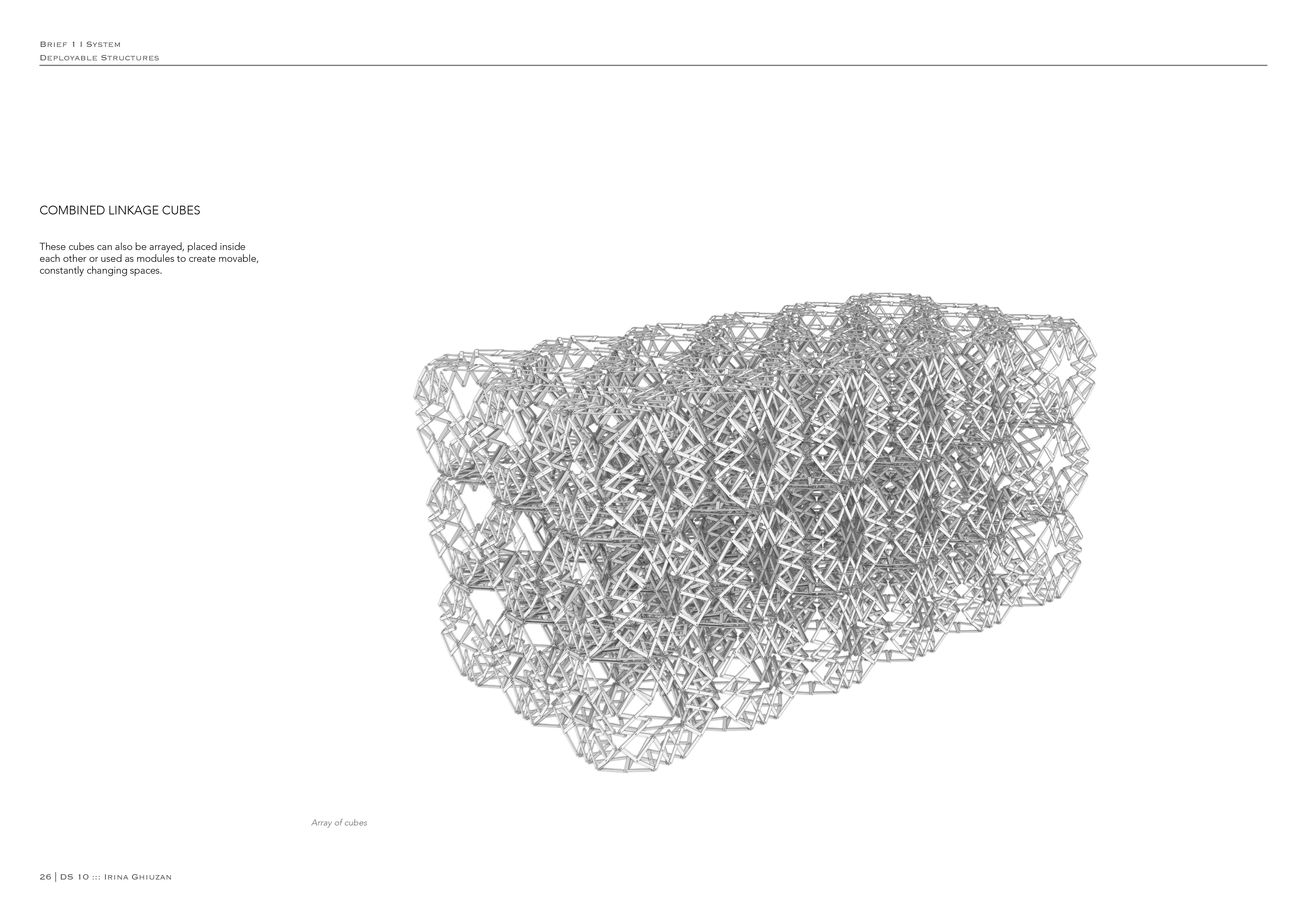
Combined linkage cubes with two linear scissors
‘Hayam’ Temple to Sunlight
The Hayam embodies the spirit of Islamic geometry: intricately interwoven patterns and repeating themes that speak of infinity. Geometry is the language of the universe; in the very small the infinite can be found.
Physical Description | Erupting flowers of perforated plywood seamlessly joined together to form a beautiful curvilinear structure. Reminiscent of muqarnas and moucharaby but stripped back to the pure essential fretwork and form, leaving behind only what is necessary. Enamels, glazes and precious metals are replaced by the gold of scattered light filtering through the delicate tracery of the screen, elevating the spirit. The treasures are not material things; they are spiritual. A place of illumination, intended for contemplation.
Emerging from a study into the geometry of Islamic art the pavilion references motifs and arabesques traditionally found in mosques and other sacred places though in itself the Hayam has ties to no religion; it transcends time and space, language and culture.
Interactivity | The structure provides a refuge from the heat of the sun and an intimate spiritual place for people to gather and rest. During the night the four pillars illuminate like a giant lantern with gas fires and the flames can be seen dancing behind the filigree patterns. The gas fires heat the area during the cold night so the space continues to function as a comfortable retreat.
More Info: http://issuu.com/josh-haywood/docs/jh_burning_man_submission
The Wind Anemones
The Wind Anemones are The Playa’s walking, floating sea creatures. While the seas animals survive and are transported by the waters currents – these wind animals live and move using the energy provided by air. They are living, interactive and mobile – huge, rolling, climbing frames.
The Anemones are lively creature, light and agile they moves ceaselessly, desperate to escape their tethers. The creatures are ethereal, elegant and imposing. During the day they want only to play with the other inhabitants of The Playa, encouraging them to climb and view them.
Although large, the anemones are lightweight and strong – their wide spanning arms signal to all who pass them while their rustling sails propel them ceaselessly. When night falls the Wind Anemones become more subdued – their gently glowing hands beckon to the burners and their arm-top lights echo the noises produced on The Playa. These animals are living beings, both climbing frames and beacons they long to inspire, interact with and inhabit The Playa.


Physical Description:
The Wind Anemone’s are the sea creatures of The Playa. Instead of moving and feeding with the seas currents and tides The Wind Anemones are a constructed representation of desert creatures. In the vast, arid, wilderness they are the only being that can survive, powered only by the winds energy.
Structurally the Anemones are super-lightweight bamboo sculptures allowing them to dance and move in the deserts unforgiving climate whilst being safe for people to climb and interact with. Each Anemone has 48 identical bamboo arms each capped with a painted polystyrene hand, glowing LED bulb and sail.
The fabric sails are both the energy harvesting component of the creatures and a reflection of the silk road that the festival represents. The many repeated elements of each Anemone means that they are cheap to build and easy to assemble. The tough, light limbs are resilient extremities; both mast and arm. While the sails create movement and foot holds for climbing.
Each Anemone is tether securely to a post again reflecting the living nature of the creatures and ensuring that they never role too far from their home. These tethers are strung with LED lights to reflect the lights of the Anemone’s and to signal the location of each tether to ensure safety at night.
The LEDs on the Anemone’s arms and tethers will be programmed to react to the sounds of The Playa, making the Anemone’s both react with and reflect the activity occurring around them.



